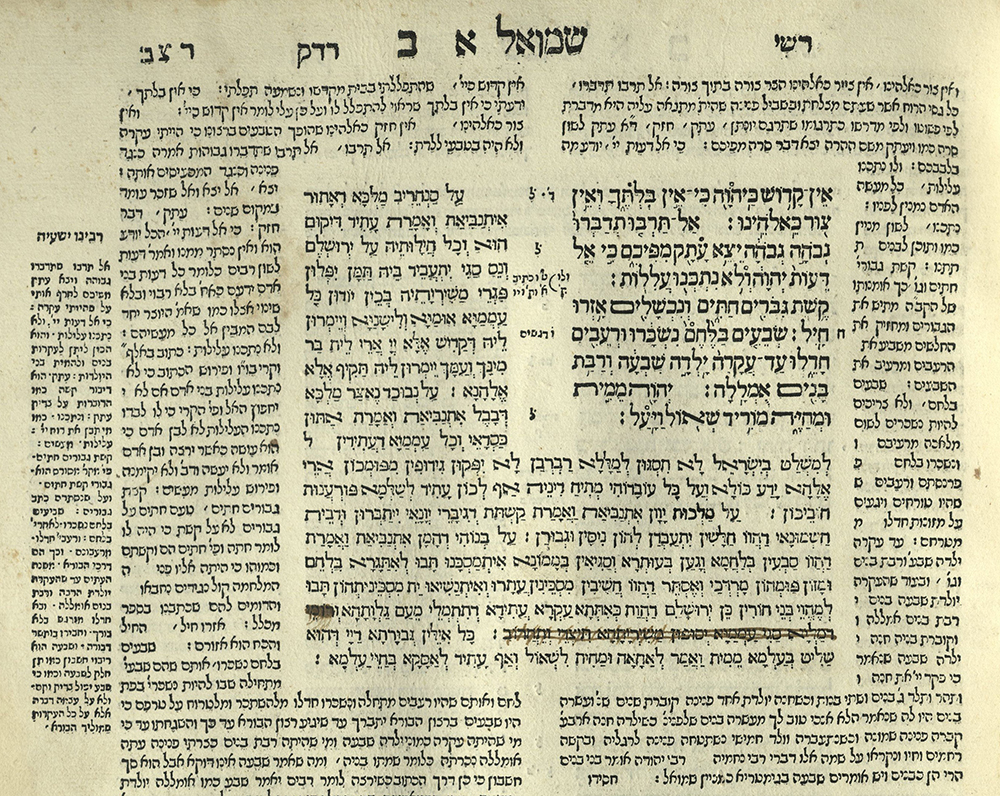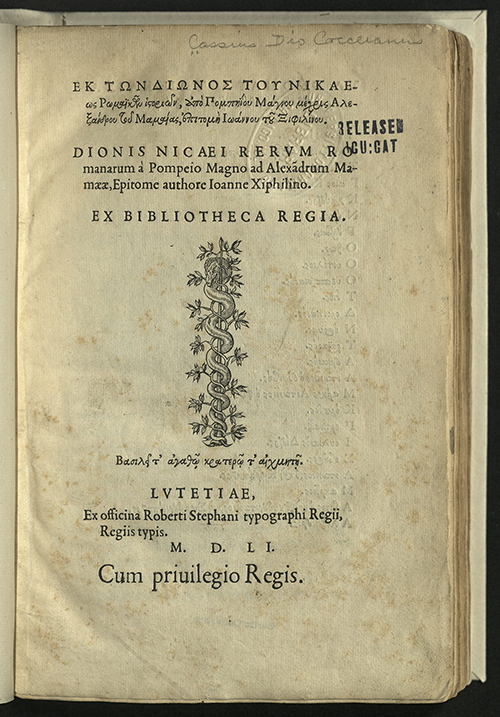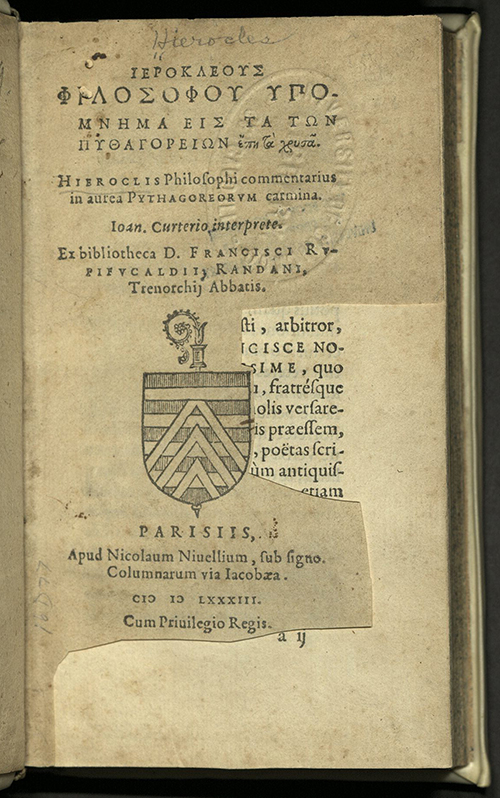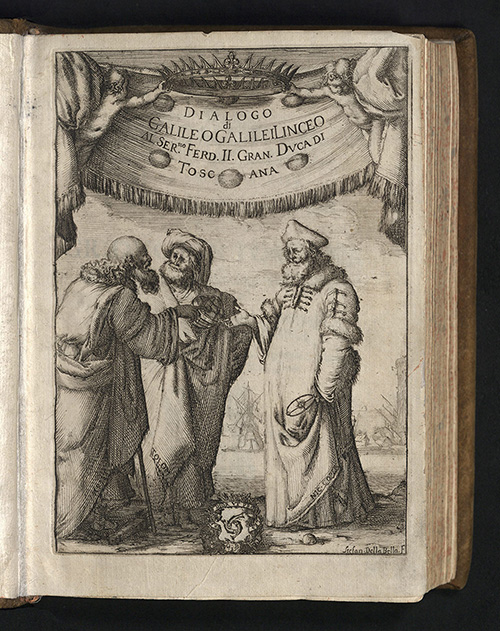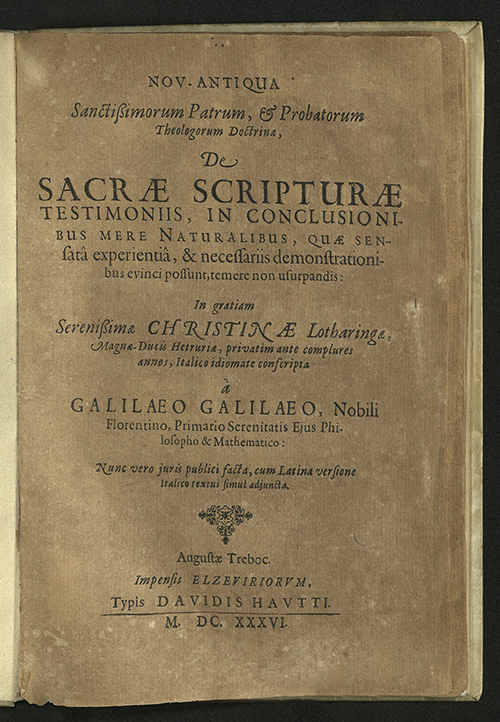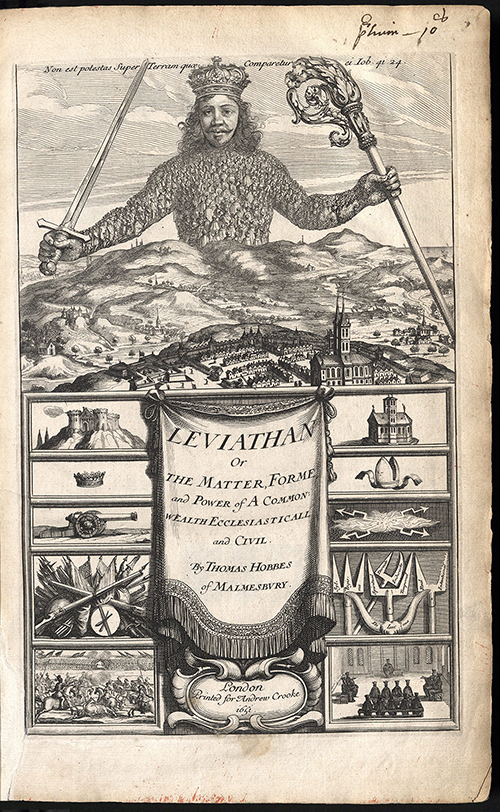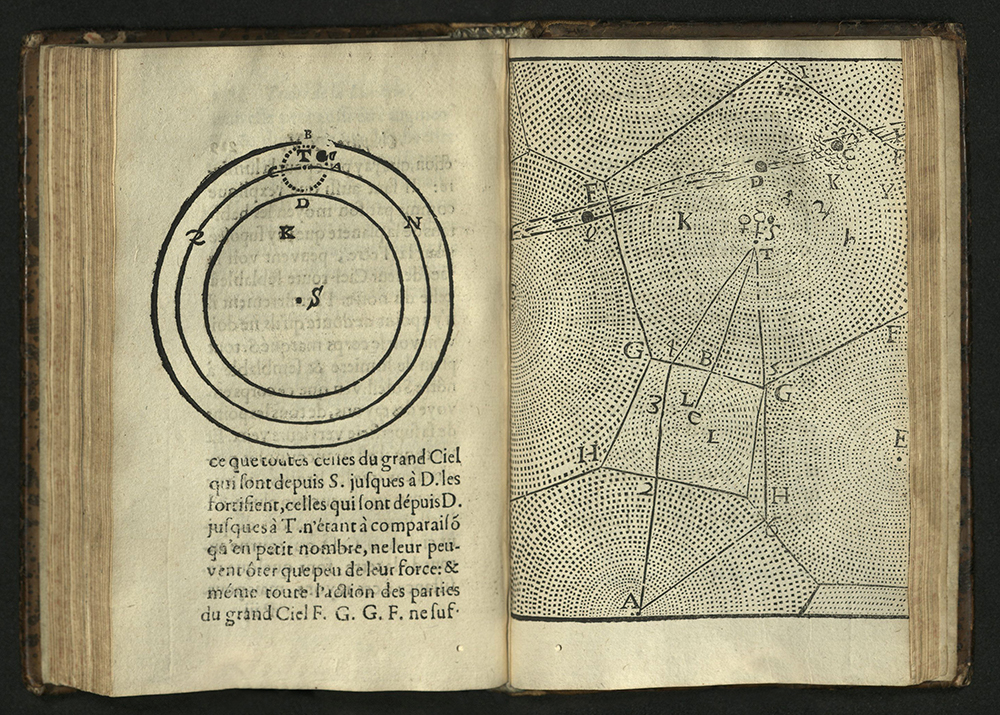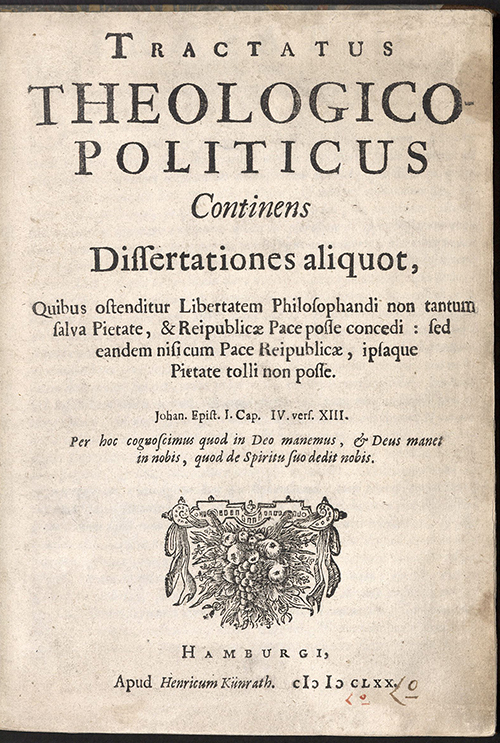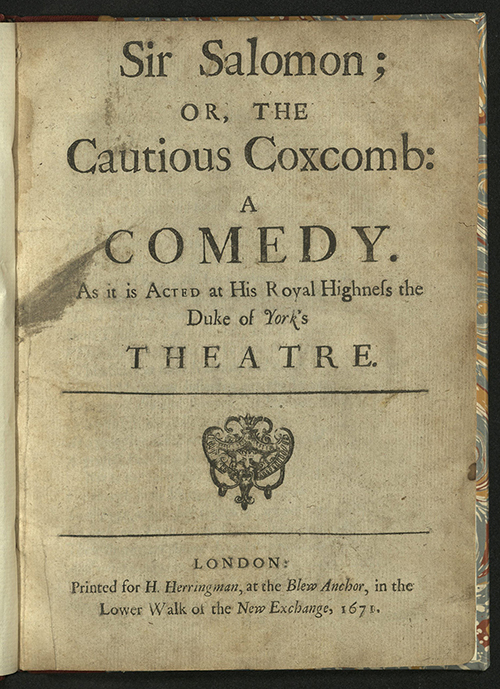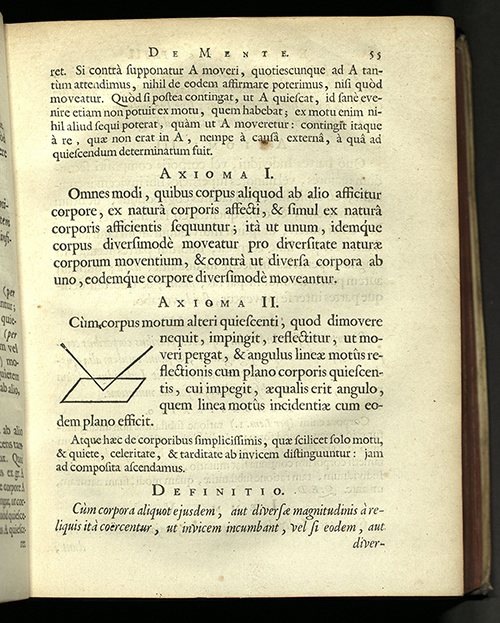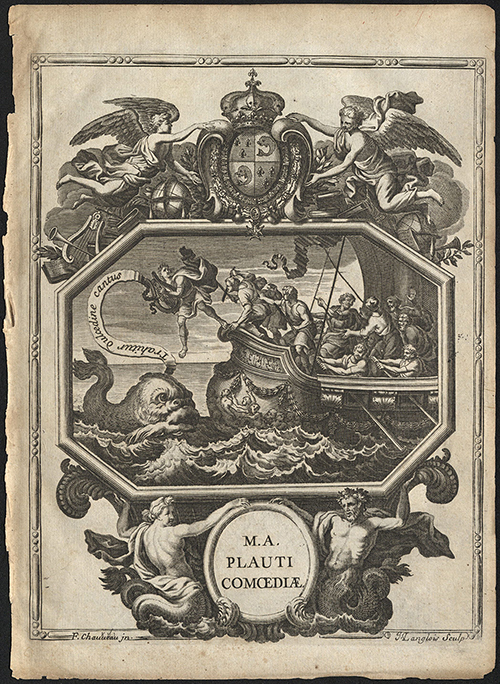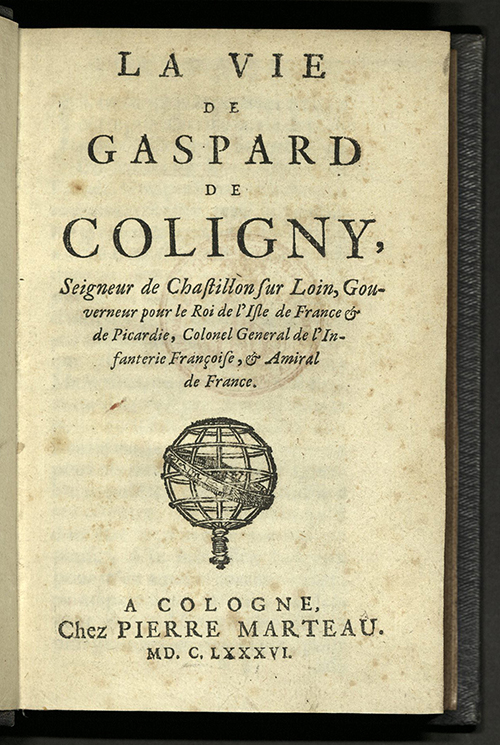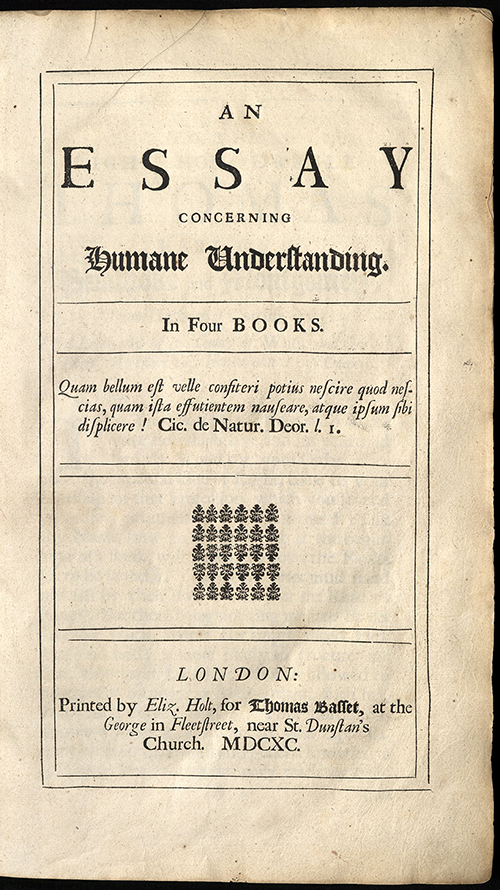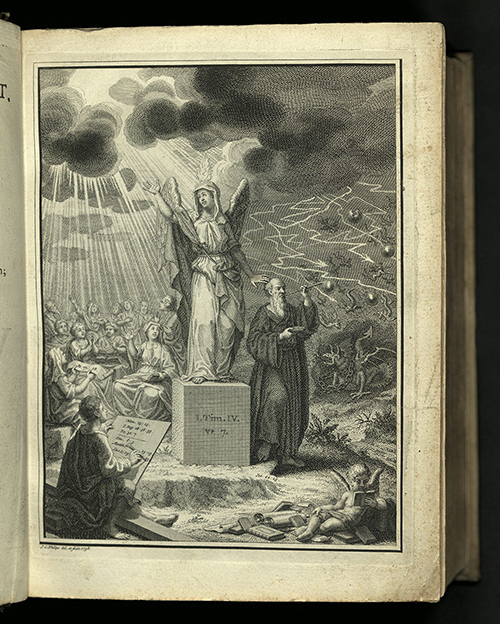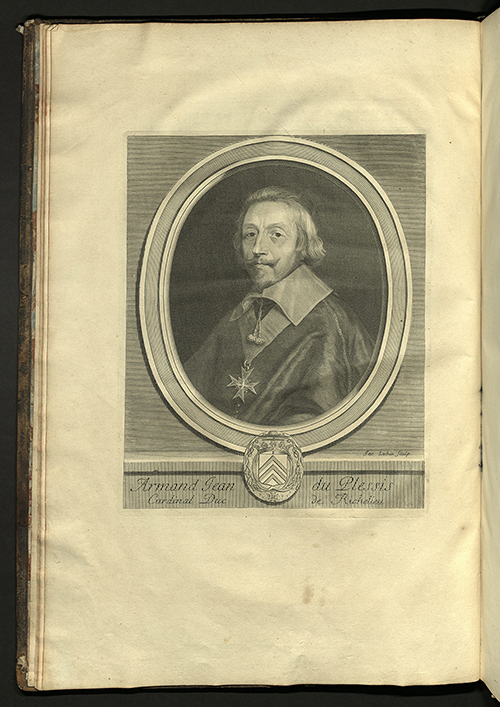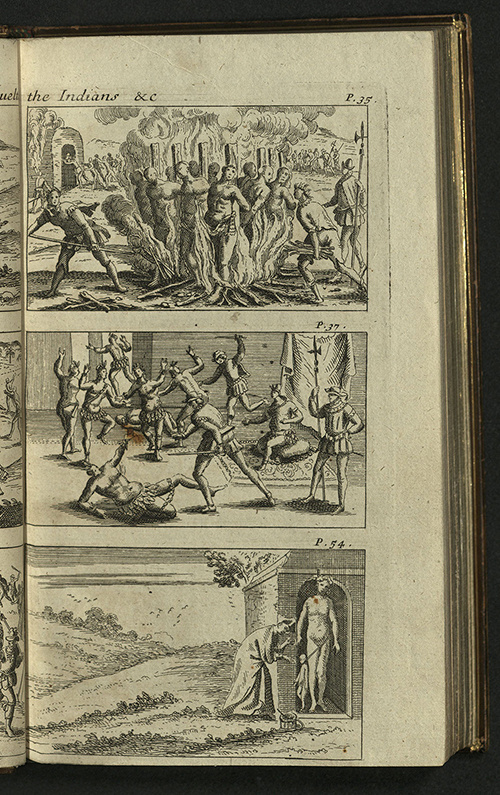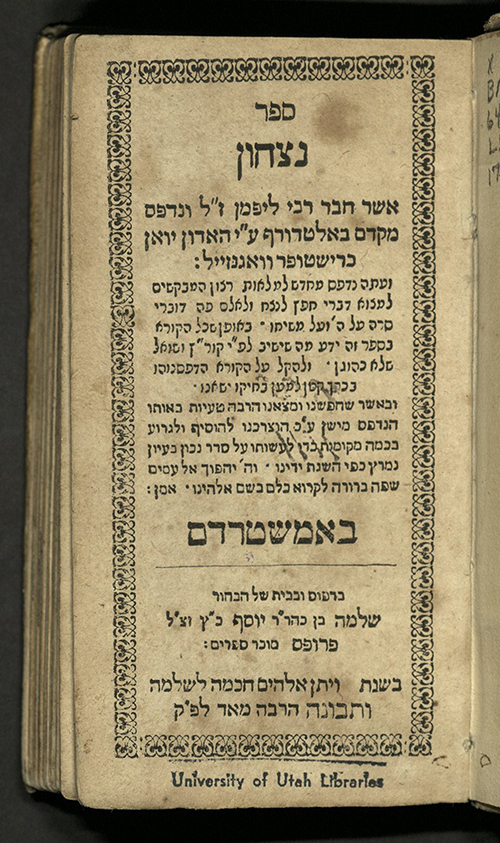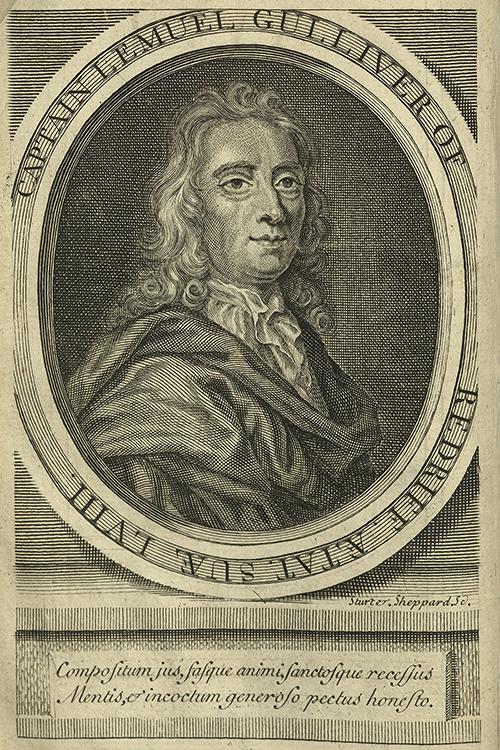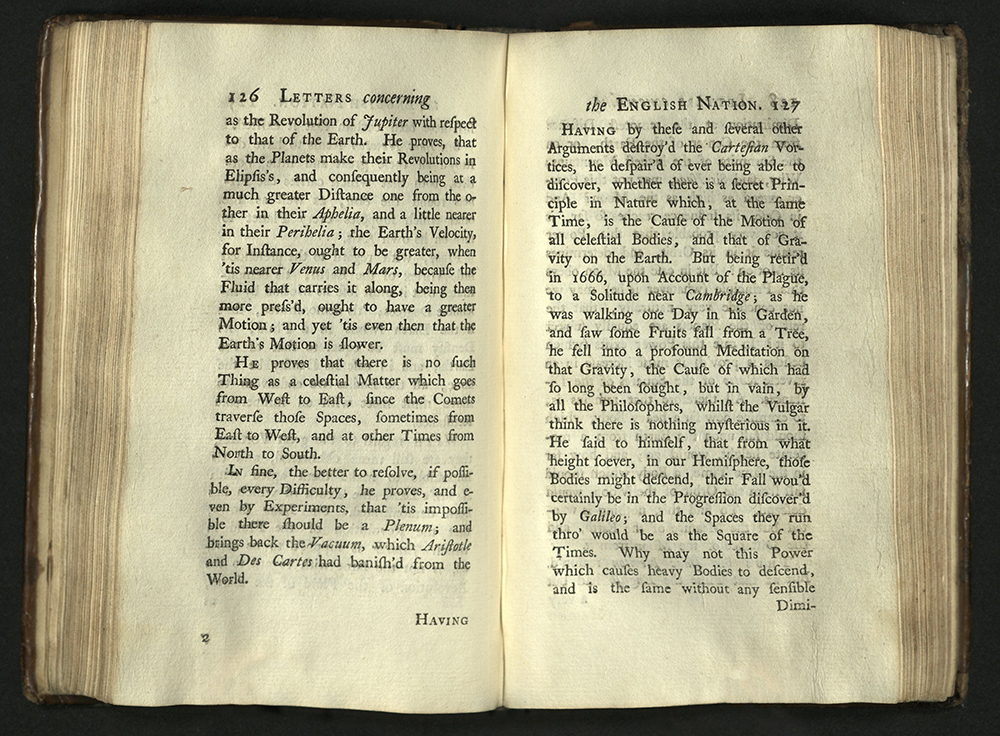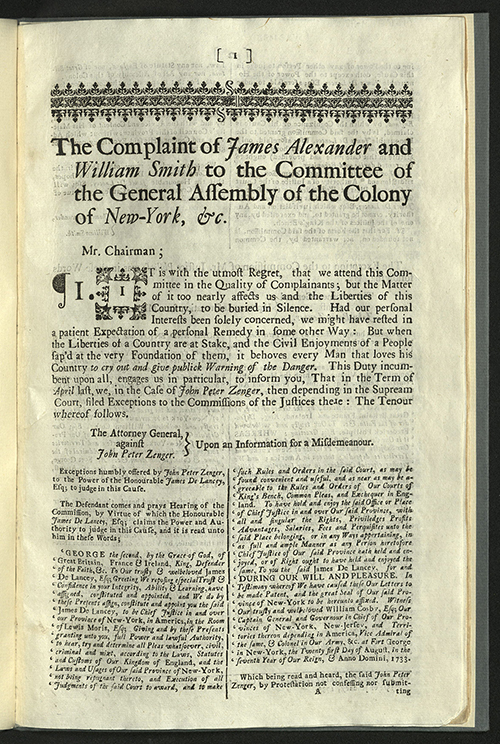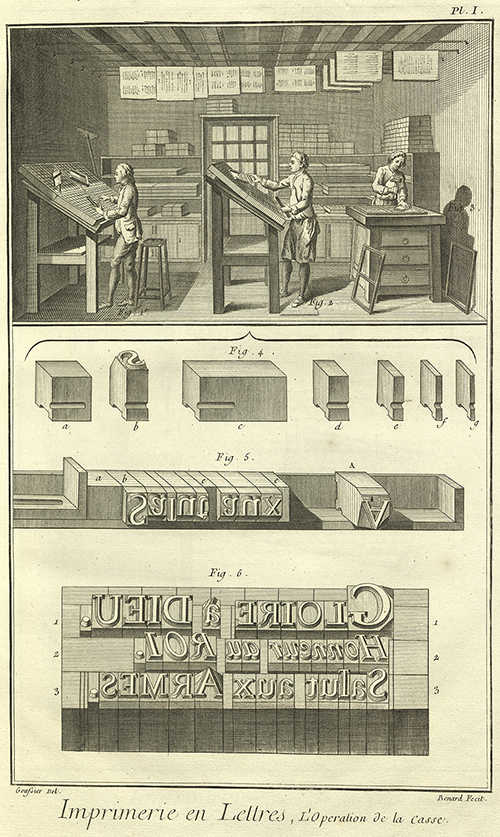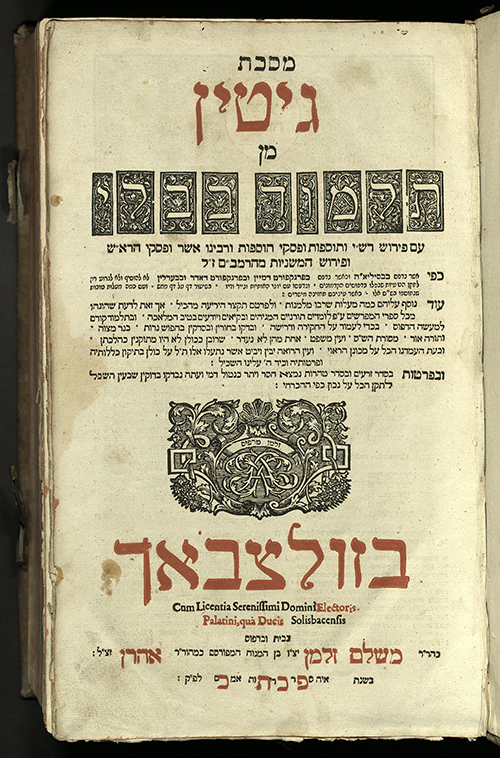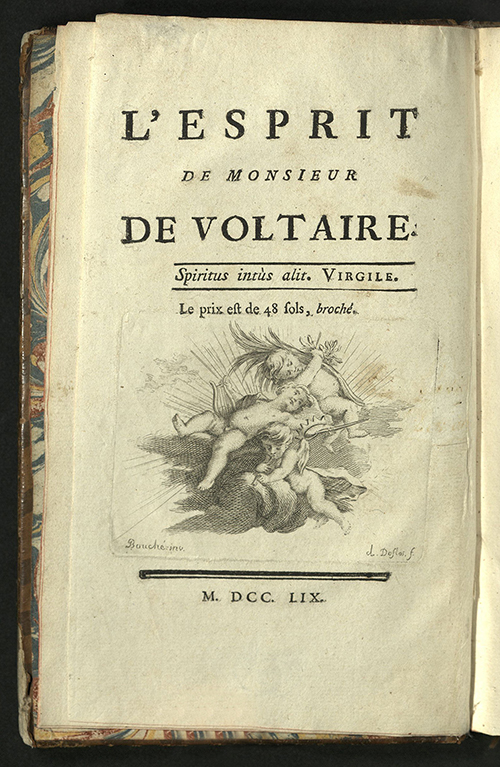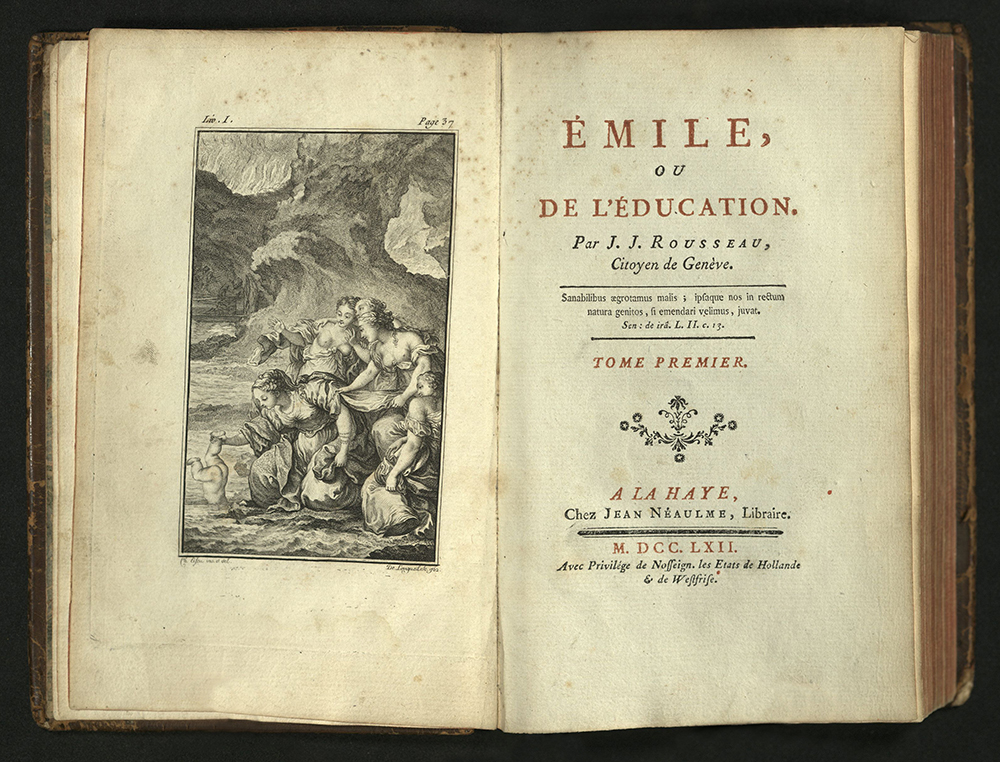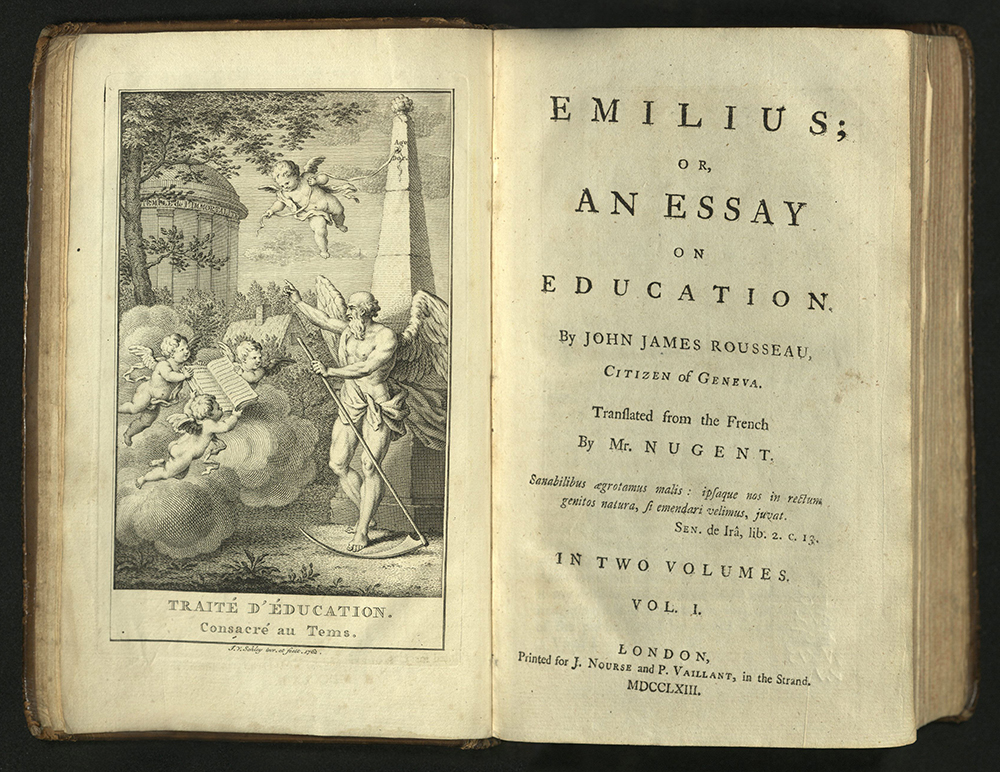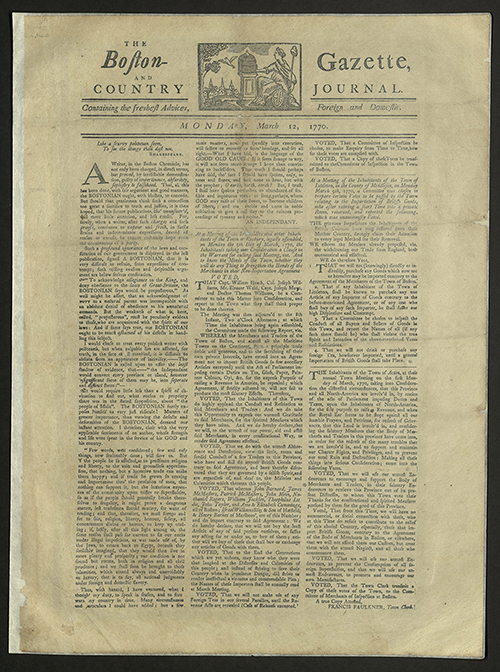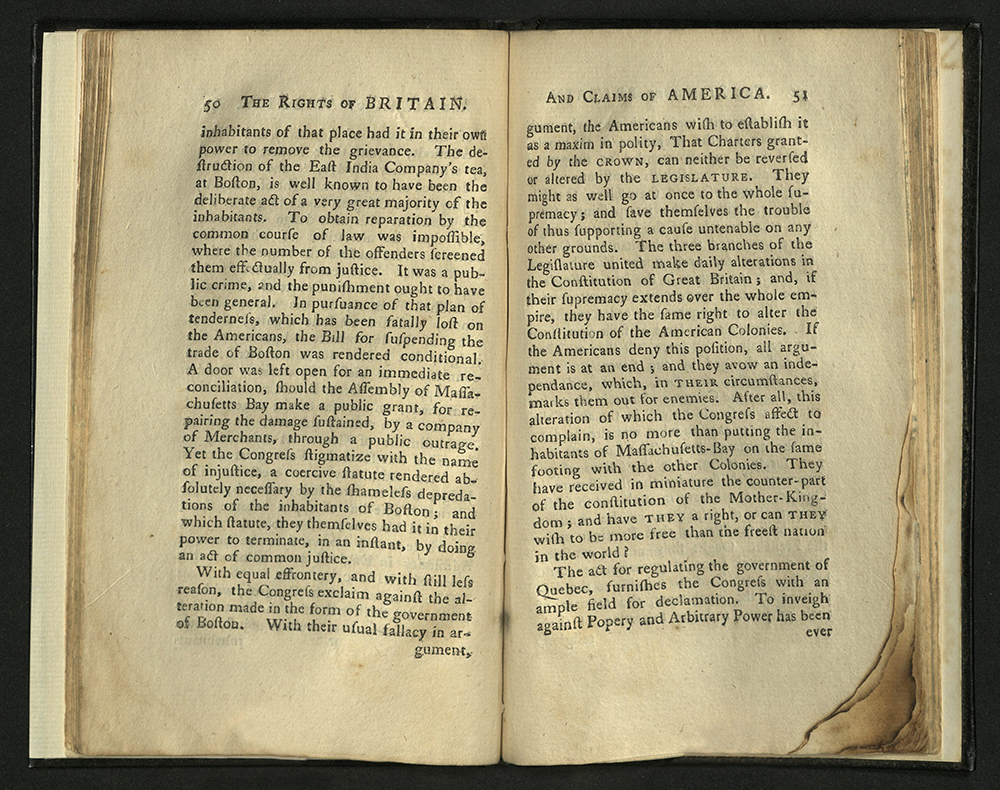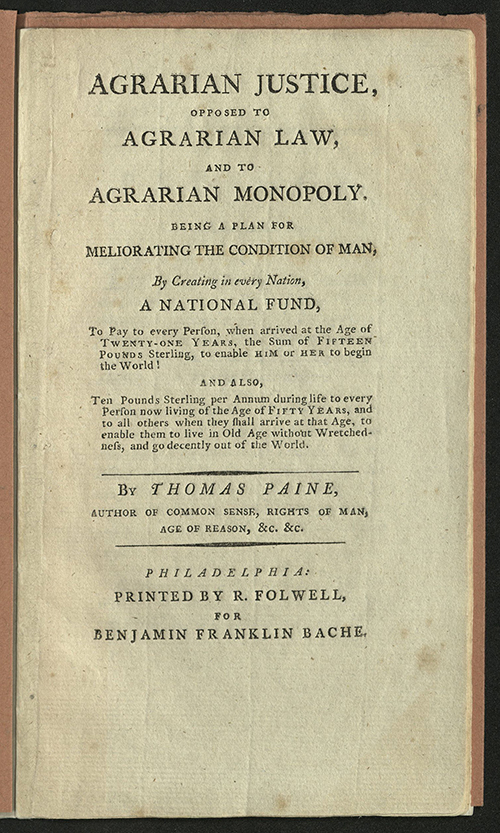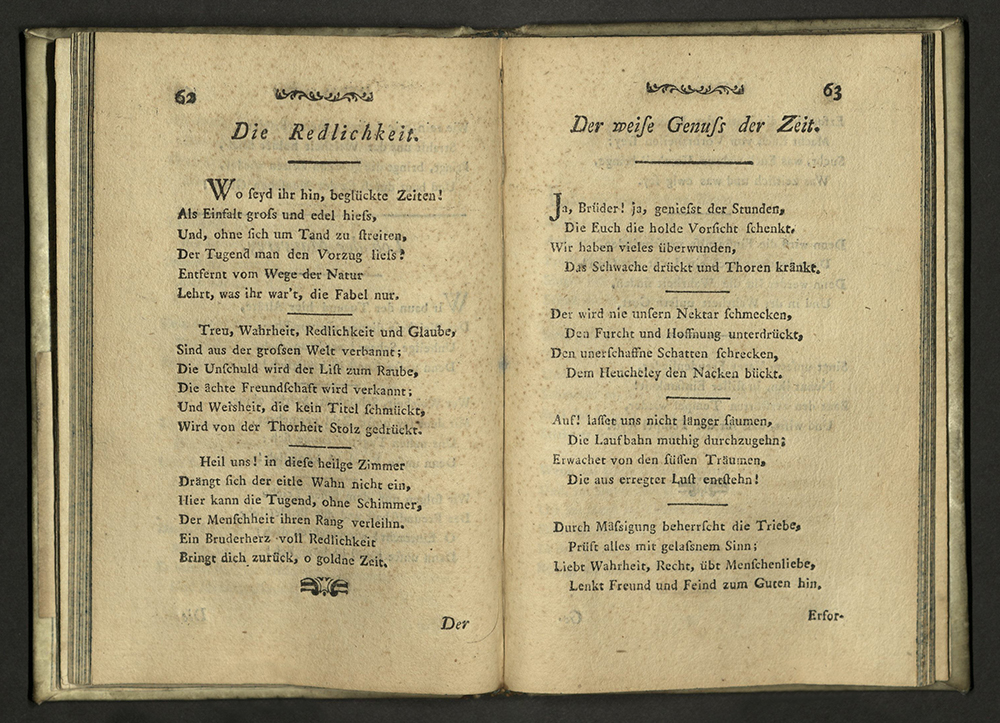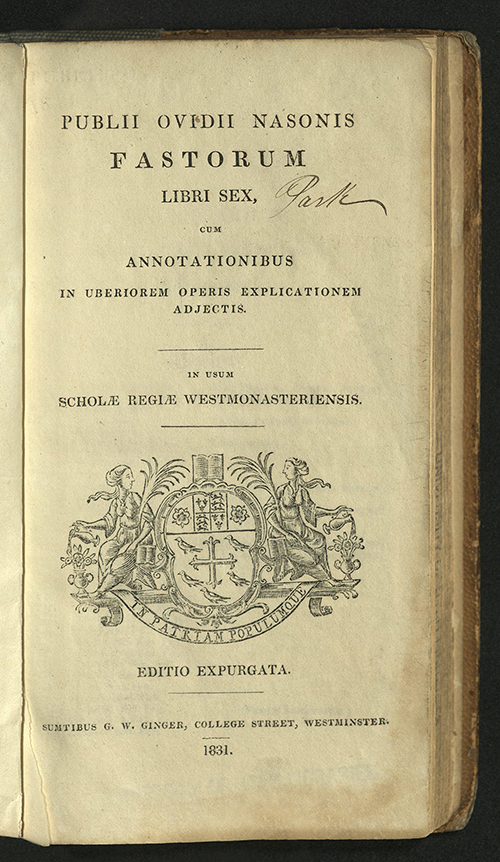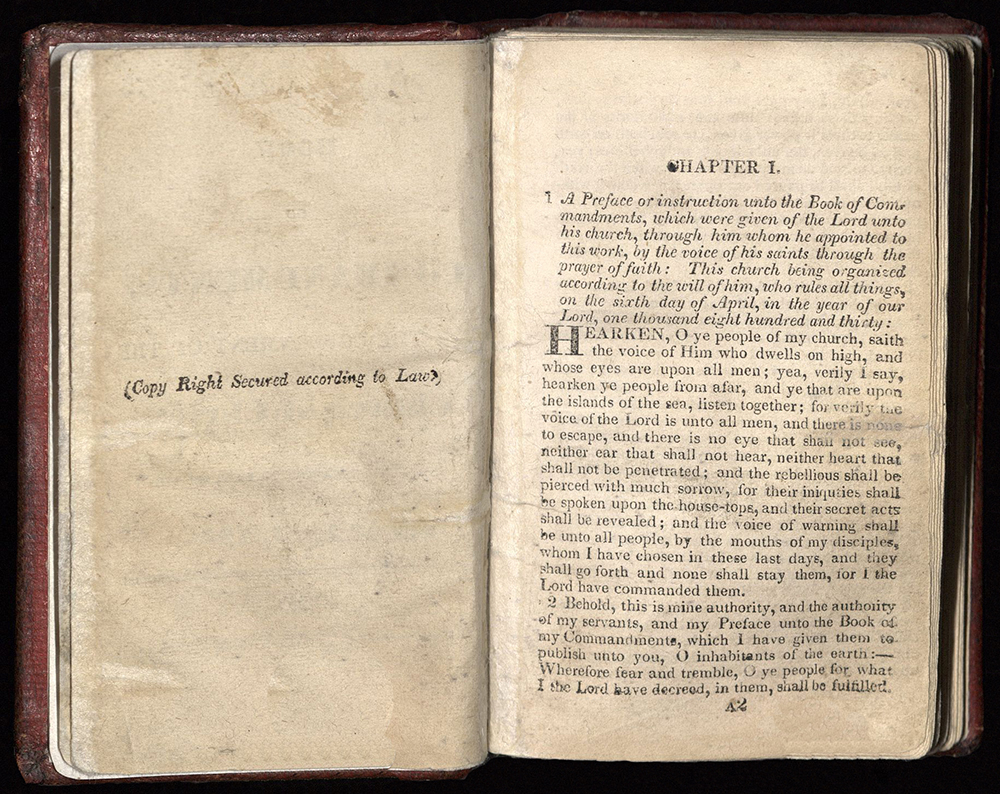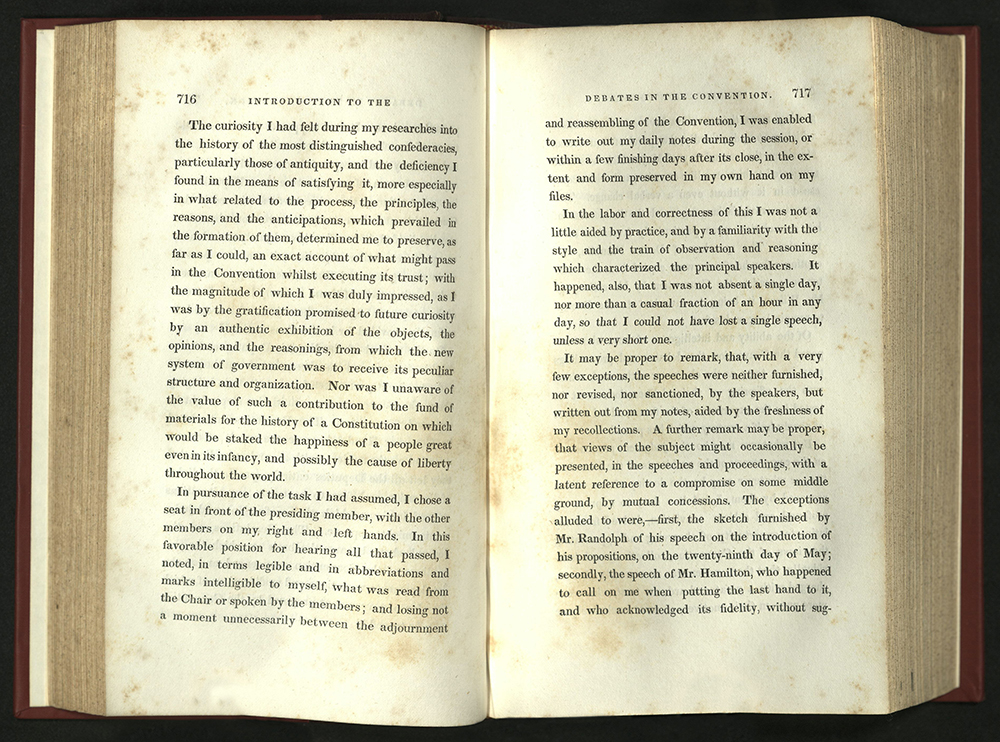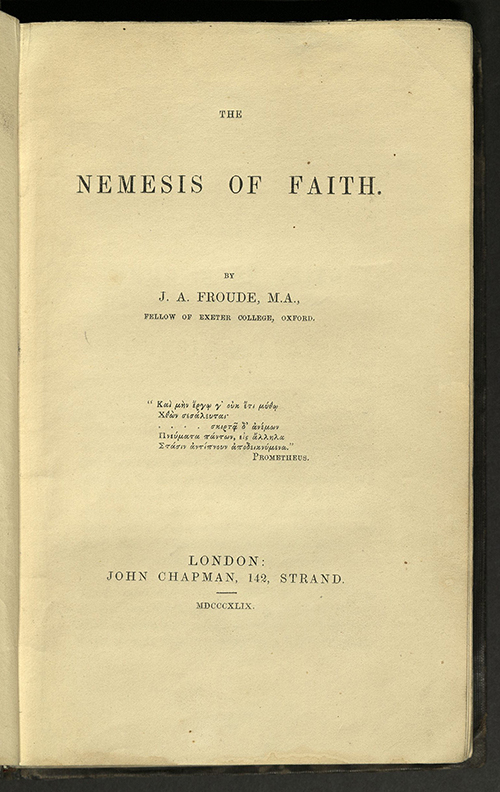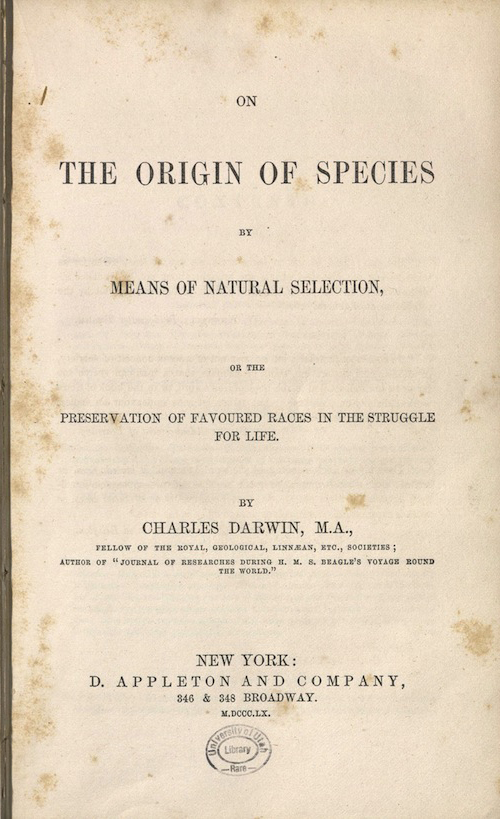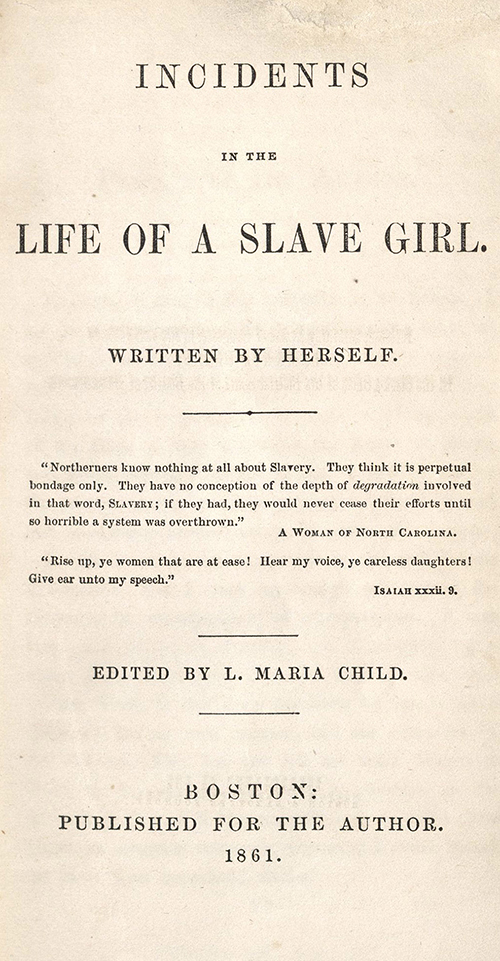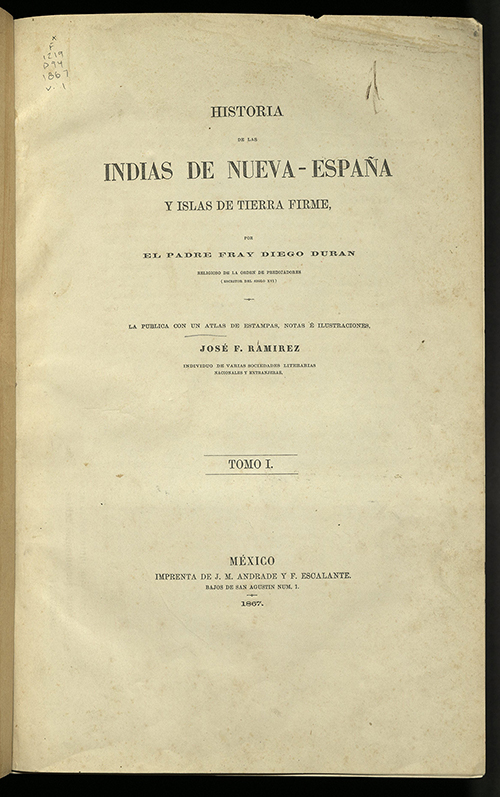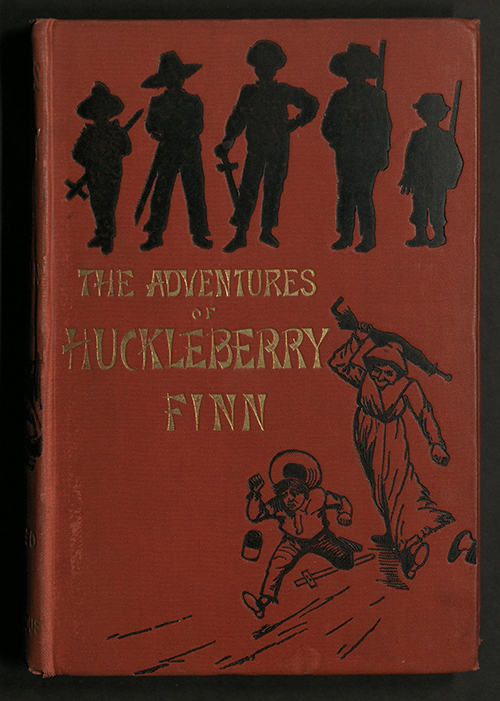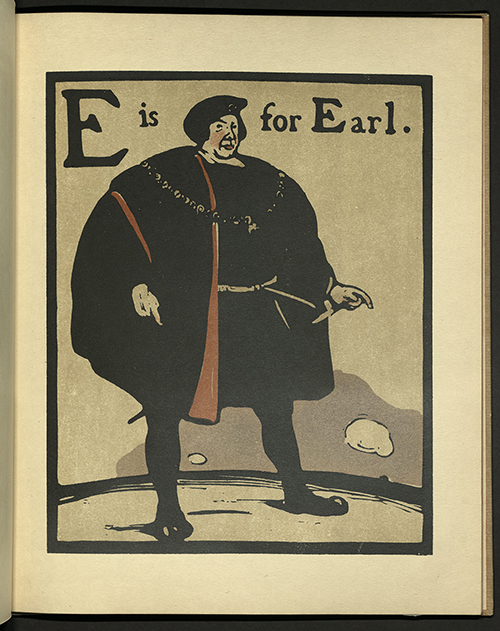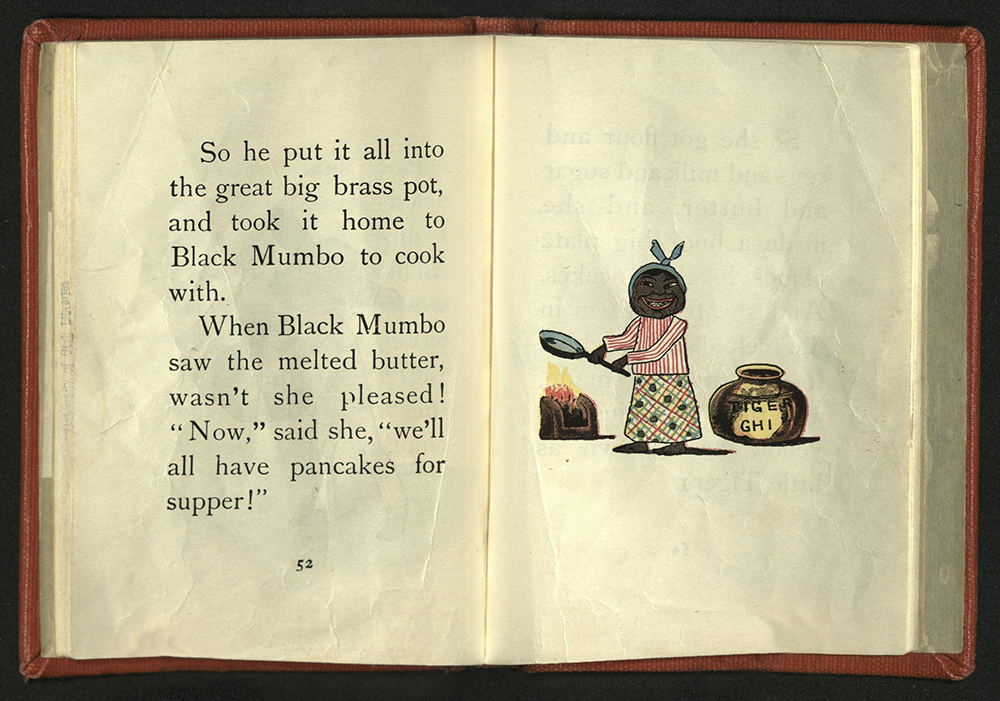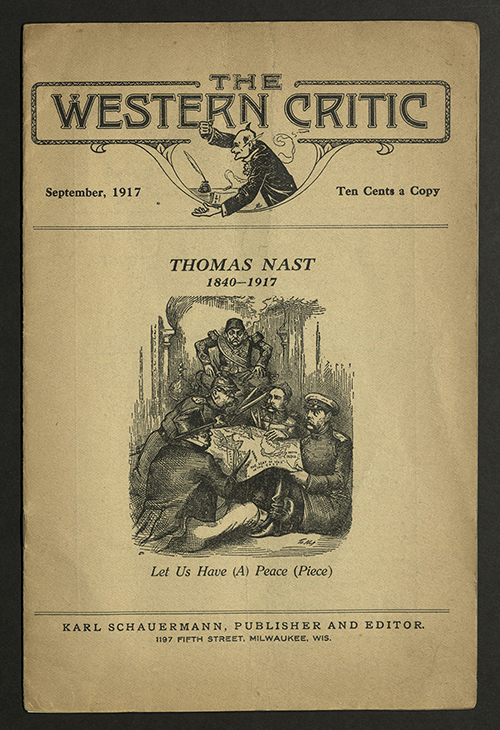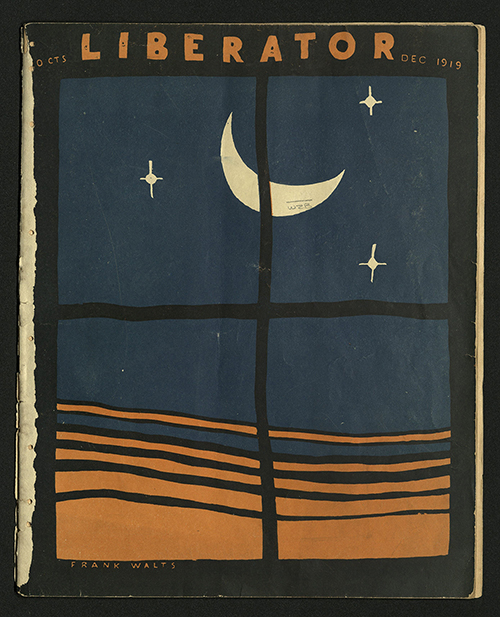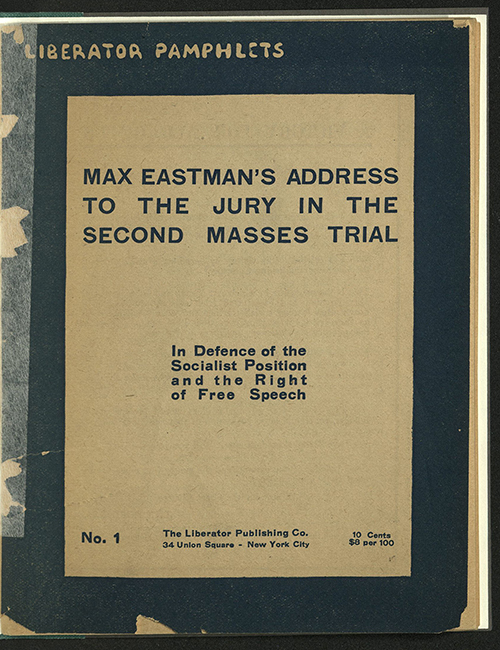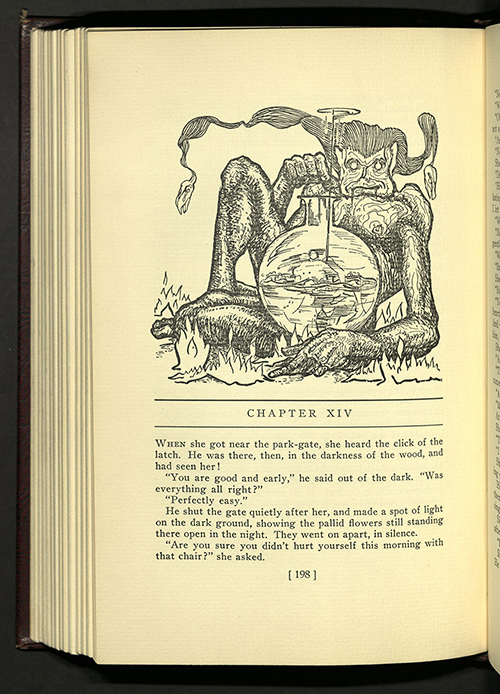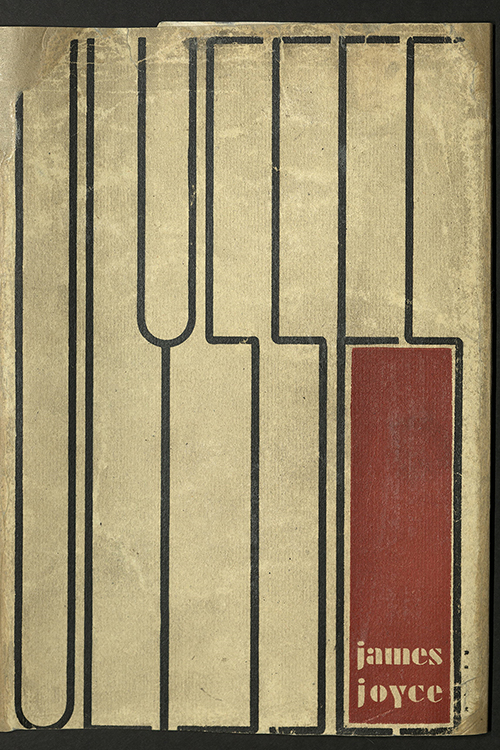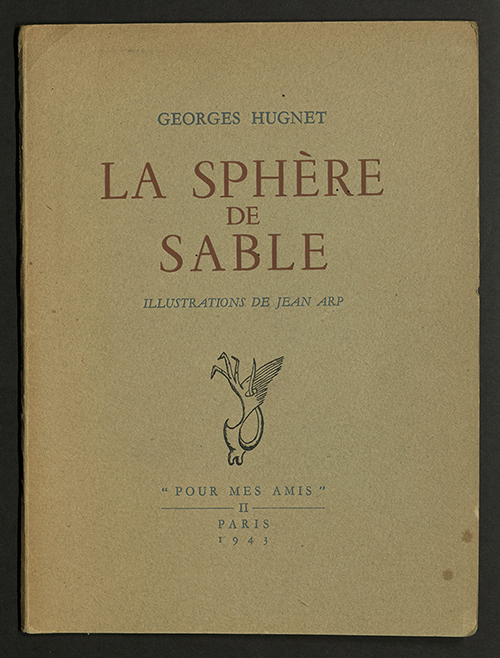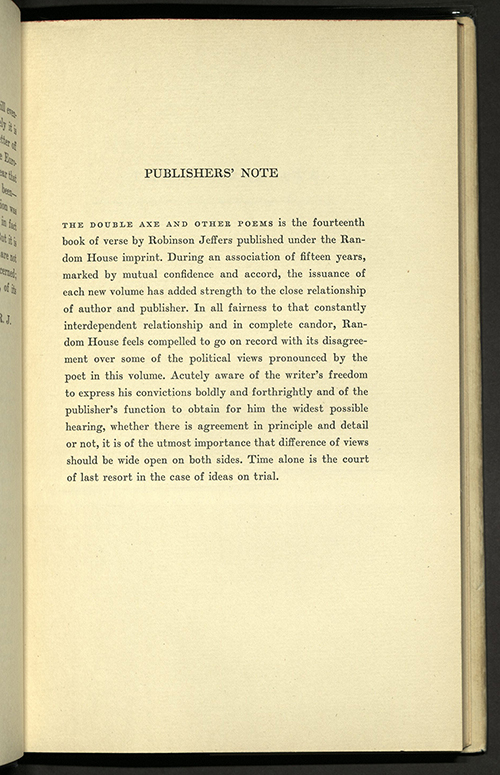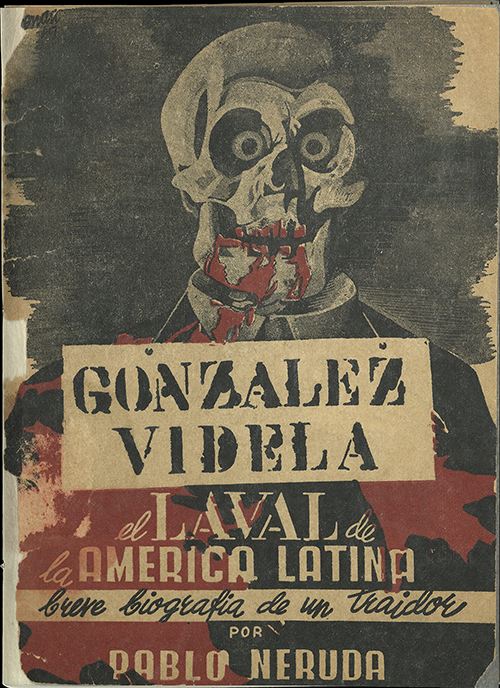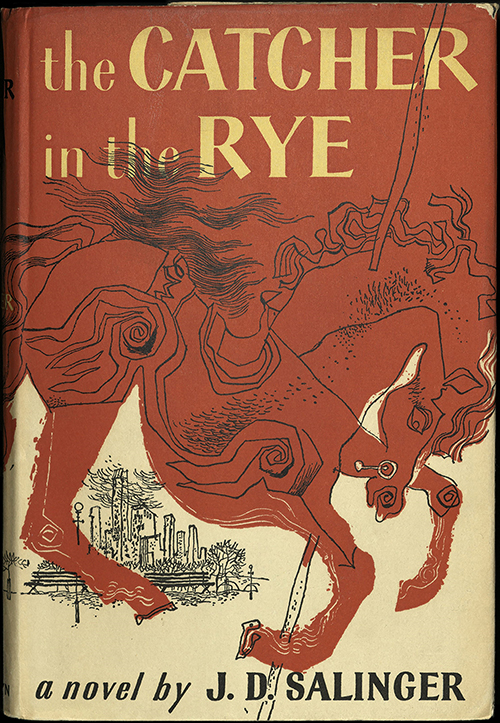SHHHHHH!
Banned, Forbidden, Censored, Redacted, Expurgated, Published Anonymously and Otherwise Attempted to be Kept from Public Consumption
Curated by Luise Poulton, 2015
Exhibition poster designed by Scott Beadles, 2015
Digital exhibition produced by Scott Beadles, 2018
BS715 1547
Daniel Bomberg was one of the earliest Christian printers of Hebrew books. In 1516, Bomberg printed his first edition of the Rabbinic Bible. At that time there was a growing interest in the Hebrew language and the "Old" Testament among Christian scholars. Bomberg also recognized a market for Hebrew texts among Jews in Italy as the population grew with an influx of Spanish and Portuguese Jewish exiles. Bomberg's publications helped provide the basis for the revival of western Semitic scholarship and studies both in Hebrew and Arabic. Bomberg's Bible was edited and accompanied by commentaries by some of the best Jewish and Christian scholars of the day. He made use of as many manuscripts of the Old Testament as possible, influencing many of the Old Testament translations by Reformation-era Biblical scholars. This copy contains several instances of Italian censure and the signatures of three different censors. Each censor found different passages by the commentators that did not agree with then-accepted New Testament theology. The University of Utah copy was part of a large private collection owned for centuries by one family. Parts of the collection were scattered across Europe after the family fled from Spain. This Bible, however, remained in the family and was brought to Utah from Latvia when family members migrated in 1935. Gift of Mr. and Mrs. David Alder of Salt Lake City, Nov. 1984.
PA3947 A2 1551
Influenced by a revived interest in the writings of the ancients, Greek presses appeared in Germany and France early in the sixteenth century. The most distinguished of these was that of the Estienne family in Paris. King Francis I had allocated funds in 1541 for a new font of Greek type to be cut by Claude Garamond. The font was delivered to Robert Stephanus, the King's Printer (typographus regius). After the death of his patron, Robert secretly made copies of the royal type and smuggled them to Geneva, where he set up shop in 1550. Accused in Paris of heresy, Robert fully embraced Protestantism in Geneva and devoted his time to publishing religious works, many for his friend John Calvin. Dionis nicaei rerum...was printed in Garamond's type. It is one of the last books issued by Robert Estienne from his Paris press.
PA8585 V4 D4 1576
Polydore Vergil, an Italian priest, spent much of his life in England. He was best known in his own time for this, his second published work. First printed in 1499, De rerum inventoribus (On Discovery), was a work unlike anything that had been published before. An inventory of historical "firsts," it combined an array of subjects in an attempt to determine which individual or culture first invented things such as the alphabet, astronomy, magic, printing, libraries, hunting, festivals, writing, painting, weaponry and religion. Vergil culled much of his work from a wide range of ancient and contemporary sources. He focused on the genius of man in the origin or invention of all things – heretical thinking at the time.
In Book I he investigated the creation of the world, the origin of religion, the origin of the concepts of "god" and the word "God." He suggested that much of Christianity had been adapted from Judaism or Roman paganism.
In 1521, more than two decades after he wrote the first three books, and at the dawn of Martin Luther's protestant reformation, Vergil added five more books concentrating on Christianity. Vergil reworked his discussion of Christianity in deference to the Roman Catholic Church, which objected to Vergil's reference to religion as a matter of scientific investigation. The intended salve to the church failed when Vergil criticized monks, priestly celibacy, and indulgences. In 1564 the work was declared heretical and all editions were added to the Index of Forbidden Books. However, the work was so popular that two censored editions were printed after the ban.
This 1576 expurgated edition was sanctioned by Pope Gregory XIII in its front matter.
PA4013 H46 1583
Hierocles, considered the first representative of the Alexandrian school of Platonism, wrote a commentary on the Golden Verses attributed to Pythagoras. J. Cureterius (fl. 1580) edited and collated this edition from a Vatican manuscript copy, providing the Latin translation on facing pages. Hierocles' theological doctrine had a Christian echo. His "Demiurge," the supreme deity, needing no pre-existing matter, created the cosmos from nothing, solely by act of will. This supreme deity exercised providence over beings with reason through angel-like spirits. Rational beings were not subject to fate. French bookseller Nicolas Nivelle (fl. 1556-1590), was the son of Sebastien Nivelle, an editor for the Jesuit order. Nivelle was involved in what is considered the first legal case to defend the right of literary property ownership by the author. In 1566, a French ordinance required booksellers, who might or might not also be the printer, to request permission for each publication. This "privilege" was to be printed on the title-page along with the name and address of the printer. Three years after the printing of Hierocles, Nivelle became embroiled in a case of copyright that pitted author against publisher, or, in this case, bookseller. The Paris Parliament canceled Neville's "privilege" to print. There may have been more to Nivelle's loss of privilege than this one case, however. In his Dictionary Historical and Critical, 1695, Peter Bayle wrote that Nivelle printed a treatise on deposing Henry III. Although this publication was not completed until after the king's death, Bayle described the work as "exorbitant licentiousness." Hierocles was printed for bookseller Nivelle by Stephane Prevosteau, who had married Jeanne Morel, the daughter of Parisian printer Guillaume Morel. John Libert married Frances Prevosteau, daughter of Stephane Prevosteau, succeeding him as printer. This multi-generational family business was typical in the sixteenth century world of print. Title page has a woodcut of the arms of the dedicatee, François de la Rochefoucauld-Randon. Woodcut headband and initials throughout.
DA130 H6 1587 oversize
A history of England, Ireland, and Scotland, the profusely illustrated first edition of Chronicles was published in 1577. The second, enlarged edition was published in 1587. The type is black letter in double columns. The pages are standard folio size, and the second edition is without illustrations. The text runs to about 3.5 million words, roughly equal to the total of the Authorized Version of the Bible, the complete dramatic works of Shakespeare, Clarissa, Boswell's Life of Johnson, and War and Peace combined. The Chronicles are best remembered not for themselves but for one of their readers – William Shakespeare. The Chronicles were an important source for thirteen of Shakespeare's thirty-seven plays. It was the 1587 second edition which Shakespeare read. Upon publication of the second edition, Queen Elizabeth's Privy Council ordered certain passages about the history of Ireland to be excised, these passages causing the Queen offense. Engraved title-pages. University of Utah copy rebound ca. 1982 in a full conservation binding of modern three-quarter levant and unbleached linen. Geometric blind stamping to leather spine and corner pieces. Title hand tooled on spine in gilt.
D57 R162
An English soldier, seaman, courtier, writer, explorer, and favorite of Queen Elizabeth I, Sir Walter Raleigh was one of the splendid figures of the Elizabethan age. His love of adventure and learning typified Elizabethan England. He was accused of treason against Elizabeth's successor, James I, who suppressed sale of History "for divers exceptions, but especially for being too saucy in censuring Princes." Raleigh wrote this unfinished work covering the history of the Jews, and ancient Egypt, Greece and Rome while being held captive in the Tower of London from 1603 to 1616. In 1618, he was put to death.
QB41 G14
Born in Pisa in 1564, Galileo studied medicine, mathematics, and philosophy. In 1592 he was appointed as Chair of Mathematics in Padua. His early researches were mainly on motion, particularly of falling bodies, but he became interested in astronomy. He developed a new type of telescope. Much of Galileo's early work proved the theories of Copernicus, of which the Roman Catholic Church disapproved, placing an injunction not to hold or defend Copernican doctrine. Galileo ignored the injunction with the publication of Dialogo. Galileo's Dialogo is a scientific and philosophical affirmation of the Copernican heliocentric theory over the earth-centered Ptolemaic theory of the solar system. Galileo deliberately chose to write this work in vernacular Italian rather than scholarly Latin in order to reach a mass audience. That, along with his attractive literary style, and, of course, the topic, made his work a great success and a threat to the authority of the Roman Catholic Church. It was this book that brought Galileo before the Inquisition in 1633, where he was forced to recant his views. He was put under permanent house arrest. Dialogo was placed on the Index of Prohibited Books where it remained until 1835. Publication took place between June 1631 and February 1632. The first printing numbered one thousand copies. This printing sold out before the end of September when it was banned by the Pope and officially suppressed by the Inquisition in 1633.
BL239 G33
The influential Grand Duchess Christina of Lorraine, mother of Galileo's pupil Prince Cosimo, was a devoutly religious woman. Because of Galileo's connection with her son, and later, her grandson, she developed a fondness for Galileo that withstood her displeasure at what she saw as a discrepancy between Holy Scripture and Galileo's science. In 1614, Galileo wrote a letter to a colleague addressing the concerns the Grand Duchess had regarding Copernicus' statement that the sun, not the earth, was the center of the universe. The letter was copied and circulated, in spite of Galileo's fears that it would fall into unsympathetic hands, which, indeed, it did. He rewrote the letter in 1615. The letter continued to have a wide readership in manuscript form. No printer dared publish it until 1636 in a Latin version by Elia Diodati, under the pseudonym of Roberto Robertini.
JC153 H65 1651a
Leviathan was a product of troubled times. The English civil war and the general conflict between royalists and republicans spurred Thomas Hobbes to write this, his greatest work. Banned as heretical and seditious and ordered to be burned by the English Licensers almost immediately after this first edition was printed, Leviathan was reprinted in numerous spurious editions. In 1703 it was placed on the Index. Hobbes, writing during the period of the Puritan Revolution (1640's), rejected the prevalent theory of divine right of kings and supported the idea of a social contract. He believed that the power of the sovereign was subject to certain limits. However, he defended absolutism, unpopular even in his day, as a necessary antidote to anarchy. The individual, then, except to save his own life, should always submit to the State. Later emphasis on the rights of the individual led to a decline in Hobbes's influence. Even so, Leviathan was a major influence on the framers of the United States Constitution.
QB41 C39 1661 ARC
Published in varying formats in 1660, 1661, 1666, and 1708, very few copies of the first edition of Harmonia macrocosmica survive. Harmonia macrocosmica, a summary of pre-Newtonian astronomy, compares the cosmological theories up to and of that time, including those of Ptolemy, Tycho Brahe, and Copernicus. The geocentric theories of Ptolemy, suggesting that the earth is the center of the universe, are contrasted with those of Copernicus, who put the sun at the center of our solar system. Tycho Brahe's theory attempted to unify the two. The book also contains sections on the Earth's climate zones, the sizes of the sun, moon, and planets, and the constellations of the zodiac. It is this broad overview of astronomical thought that kept the book from being banned under strictures put in place by Pope Paul V in 1616. These same strictures put Galileo under house arrest for the rest of his life after the printing of his Dialogo (1632), which defended Copernican theory. Andreas Cellarius was the rector of a college in the northern Netherlands. The printer, Jan Jansson, was one of the preeminent publishers of his time. Both art and science were applied to this production, with discoveries heralded by imaginative images as well as observed fact. Cheerful cherubs float above earnest astronomers holding transits and compasses. The first edition was extremely popular, prompting the second edition. This second edition of the atlas contains twenty-nine lavishly designed and hand-colored engraved plates, some of the finest examples of seventeenth-century Dutch cartography in existence. The technique of engraving began in ancient times as a way to decorate objects, particularly of metal. After the development of the printing press in Europe in 1450, engraving became a way to create high quality illustrations which retained precise detail, even after multiple impressions. Specialized tools, known as "burins" and "gravers" of various sizes and shapes were used to cut away the surface of a metal plate. The 1708 reissue bears the engraved names of Gerald Valk and Pieter Schenck on each plate, although not one line of the drawings had been changed from previous editions.
QP29 D48 1662
De Homine is a work by French mathematician, philosopher, and physiologist Rene Descartes in which he explores the distinction between mind and body. He completed it in Holland about 1633 just before the trial condemning Galileo took place. Descartes suppressed the publication of his treatise after learning of Galileo's fate at the hands of the Inquisition. As a result, the lengthy essay on physiological psychology was published only well after the author's death.
Q155 D435 1664
In 1633 Rene Descartes was poised to publish Le Monde when he heard that Galileo had been condemned by Rome for the views he expressed in Dialogo. Descartes had received a copy of Dialogo in 1634, two years after its publication (and one year after its suppression), from a friend. Descartes supported the Copernican model and said so in Le Monde. He stopped publication of Le Monde, until, he hoped, the Roman Catholic Church retracted its condemnation of Galileo. Whether Descartes stopped publication out of fear or true concern for the feelings of his church is not clear. Le Monde was not published in his lifetime. It turned out to be one of the last scientific works he wrote before he moved on to philosophy – in part, perhaps, because he was genuinely concerned about contradicting his church with scientific heresy. Descartes wrote that his intention was "to explain all the phenomena of nature." The first edition of Le Monde was based upon a copy of the original manuscript. It is likely that Le Monde is incomplete.
B3985 A3 1670
Printed without authorship attribution, a false publisher and imprint were given in order to maintain anonymity and protect the author and printer from political retribution. The book was condemned by the Synod of Dordrecht, which took place in 1673, and banned the following year. This is one of the few books banned in the Netherlands during the early modern period. In spite of this, it could be found and bought throughout Europe fairly easily. In this Tractatus Spinoza combined biblical criticism with political philosophy. His metaphysics was heavily influenced by Moses Maimonides and English philosopher Thomas Hobbes. From its first page, the book sparked controversy. Spinoza expressed his skepticism of the authenticity and historicity of the Bible, pointing out its inconsistencies.
PR3339 C44 S5 1671
Published anonymously, this is one of only two plays written by Catholic poet and diplomat John Caryll. Caryll was from a Roman Catholic family which had settled in west Sussex. His father compromised his religion and his politics during the civil war period but reverted to royalist Catholicism at the Restoration. Partly educated at St Omer, Caryll went on to the court of Parma where he served the duke. Caryll was concerned with the situation of English Catholics and wrote a treatise titled Not Guilty, or The plea of the Roman Catholick in England sometime before Charles II's religious policy was settled. During the Restoration, Caryll went to London where he wrote two successful plays, The English Princess (1666) and Sir Salomon. This play is a free translation, with additions, of Moliere's L'ecole des femmes (School for Wives.) Comedian James Nokes played the part of Sir Arthur Addell. Nokes appeared on stage before a court audience, which included many Frenchmen, wearing a preposterous costume mocking French fashion.
B3955 A18 1677
This is the first edition of the posthumous works of Spinoza, including all his major philosophical writings, except the Tractatus theologico-politicus. The book was edited by Jarig Jelles, a close friend of Spinoza. The day before his premature death, Spinoza had arranged for his unpublished works to be sent to his publisher, Jan Rieuwertsz, in Amsterdam. The author, place and editor are not printed on the title-page, however. The book had been banned by the states of Holland and West Friesland as being "prophaen, atheistisch ende blasphement." This book contains the first printing of Spinoza's Ethics, considered the first systematic exposition of pantheism. Spinoza had started writing it in 1661 and completed the manuscript about 1675. He had postponed its publication until the furor caused by the publication of his Tractatus politicus had subsided. In this collection is "Tractatus Politicus," his last work, in which he developed his philosophy of society, law and government; "Tractatus de Intellectus Emendatione," in which he exposed his doctrine of method, involving an account of the cause of the philosophical inquiry and of the supreme object of knowledge, originally intended as an analytical introduction to the "Ethics;" "Epistolae et ad eas Responsiones," a group of seventy-four letters, including his correspondence with Henry Oldenbourg, first secretary of the Royal Society; and "Compendium Grammatices Linguae Hebraeae." University of Utah copy bound in contemporary vellum with the author and title in manuscript on the spine. The edges have been stained red.
PA6568 A2 1679
This is the Delphin edition of Plautus, considered to be one of the best of that series. It is also one of the notable examples of where passages deemed to be inappropriate were gathered in an appendix, saving readers, as Lord Byron later wrote, "the trouble of an index."
DC112 C6 C6 1686
Gaspard de Coligny (1519-1572) was a leader of the Huguenots. Raised in the court of King Francis I, his mother was lady-in-waiting to the queen. In the war against Charles V, de Coligny, appointed admiral in 1552, distinguished himself as a bold, calm leader during the battle of Saint-Quentin, which he successfully defended against the Spanish. Later, as Henry II increased his repressive measures against the reformed church, de Coligny and his brother began to secretly protect persecuted Protestants. After the death of Henry II, de Coligny converted to Protestantism and joined with the Prince of Condé, leading the Huguenots against King Charles IX and the Queen Mother, Catherine de' Medici. Defeated in Jarnac and then Moncontour, he managed, nonetheless, to negotiate the peace of Saint-Germain, which granted key privileges to the Protestants. He became a consultant to King Charles IX. Coligny continued to needle Roman Catholic leaders, however. A failed plan hatched by Henry de Guise and Catherine de' Medici led to the St. Bartholomew's Day massacre on August 24th, 1572. That night, de Coligny became the first of the Protestants to be executed. Published anonymously, the author of de Coligny's biography, Gatien Courtilz de Sandras was a popular writer who led a tumultuous life, including twelve years in the Bastille, because of his polemic writings. After his release from the Bastille, he was banned from Paris but continued to print his works in Holland. He is best known for his memoirs of d'Artagnan, a work revived by Dumas the elder in his novel of The Three Musketeers. Sandras' writing foreshadowed the novel of the future with his use of picturesque language and exciting action scenes.
B1290 1690 oversize
John Locke applied an Anglo-Saxon penchant for facts to the study of philosophy (a field long dominated by speculative enquiry). Locke argued that the minds of all newborns were blank slates and concluded that most knowledge emanated from experience. Further, suggesting that humans have no innate principles, he questioned the existence of God. Locke's Essay was twenty years in the making. He completed the initial draft in 1671, but was unable to work on it further until his escape from England to Holland in 1683. Final revisions were completed by the time he returned to England in 1689. Although Locke was uncertain about the book's reception, it quickly ran to several editions. Printer Elizabeth Holt was most likely a widow who carried on her husband's business after his death in 1671. In 1688, she was ordered to "lay down the trade of printing," part of growing strict control of the printing trade. To continue printing risked having her shop closed down. This may have been one of her last printing jobs. In 1700, the Roman Catholic Church placed Locke's Essay on the Index Librorum Prohibitorum, where it remained until 1951. From 1763 to 1776, John Locke's political theory was especially popular reading among English colonists in North America. University of Utah copy bound in contemporary paneled calf.
BF1410 B29
Balthasar Bekker was a key figure in ending the persecution of witches in seventeenth-century Europe. The son of a German pastor, Bekker also joined the clergy. He was an admirer of René Descartes and wrote several books of philosophy and theology, causing considerable concern from the authorities about his "free" thinking. Driven from Germany, he moved to Amsterdam, and from there traveled to England and France. De Betoverde Weereld (The World Bewitched) is his best known work. He argued against belief in sorcery, witchcraft, and possession by the devil (questioning, in fact the devil's existence), denouncing these beliefs as mere superstition. He used Scriptural references for his argument. De Betoverde went through several Dutch editions (within two months of publication, four thousand copies were sold) and was translated into English, French and German. A number of works were published refuting his argument. For this work he was tried for blasphemy, maligning the Church, and spreading atheistic ideas against Holy Scripture. The work was banned in some but not all towns in the Netherlands.
CT1011 P4 1696b oversize
Charles Perrault's two volume work contains one hundred eulogies with engraved portraits, fifty per volume, of famous men who had died during the seventeenth century. Perrault's text is an important source of primary information about these men. Perrault divided his Hommes illustres into five categories: churchmen, military leaders, statesmen, scholars and men of letters, and artists. This copy is particularly rare, one of only a few copies containing portraits of Antoine Arnauld and Blaise Pascal – the portrait of Arnauld mounted at a date later than the printing. In other copies, these portraits were replaced with Louis Thomassin and Charles de Fresne. While the work was still at press, the Jesuits complained to the king about the inclusion of Jansenists. Louis refused permission to publish the work until Arnauld and Pascal were removed. Perrault and his editor, Dezallier, struggled to publish the complete edition of biographical portraits. The Jesuits threatened to blackmail Perrault, who finally succumbed to the pressure for fear of losing his royal pension. The interference caused no small amount of scandal. Racine purportedly wrote a now-lost poem about the incident.
F1411 C426 1699
This is a translation of the French edition of 1697, containing six of De Las Casas's nine tracts on Spanish atrocities in New Spain. The first English translation was printed in 1656 under the title Tears of the Indians. That edition places the number of victims at 20 million, a figure that was doubled in this edition. The first edition of De Las Casas's famous "Indian Tracts," the earliest report of Spanish atrocities in the Americas, and the first to condemn these atrocities, was written in Spain in 1539. Its publication was forbidden until 1552. De Las Casas, a son of one of Columbus's sailors, went to New Spain in 1502 with its governor, Nicolas de Ovando. He is thought to be the first priest ordained in America. At the time, this work provided the principal sources of information on South America, particularly the state of its indigenous populations. De Las Casas's horrific account was used by England and other European countries as fodder for their own political struggles with Spain.
Compiled in 1390 by the great rabbinic authority of medieval Prague, the widely-read Book of Victory was so controversial that it wasn't printed until the seventeenth century. Christian Hebraists reviled its response to their religion. So polemical was the text that it was actively hidden from Christian readers. It remained, however, the main recourse for those in need of arguments to refute the interpretation of Hebrew Scriptures used by those who sought the conversion of the Jews. The book was first printed in the seventeenth century (once in full, edited by T. Hackspan, Altdorf, 1644, and once in part, edited by J.C. Wagenseil, Altdorf, 1681 – ironically enough, in both cases, by Christians with a counter-counter-missionary agenda). This edition is the first printing of Nitsahon by and for Jews, printed in Amsterdam at the height of that city's reputation as an exemplary haven of free speech.
PR3724 G7 1726
When Travels, by "Lemuel Gulliver," was first published, only a few close friends knew that the real author was Jonathan Swift, the Dean of the Anglican St. Patrick's Cathedral in Dublin. Swift, a native Dubliner, was involved in several political controversies during his lifetime, particularly in relation to the treatment of the Irish by the English. Travels was a none-too-subtle, bitter satire of English royalty, politicians, scientists, and historians. Styled after popular travel and exploration narratives of the seventeenth century, Travels lambastes the much-lauded human reason of the Enlightenment. In Travels, Swift suggests that no change in governmental form would ever effect any lasting change in political behavior. Mankind, never noble for long under any circumstances, would always face the same unequivocal self: full of greed, excess, corruption, exploitation, violence, and decadence. Benjamin Motte, a London printer, received an anonymous letter requesting that "Captain Gulliver's" memoirs be published. A manuscript, probably copied in a hand other than Swift's, was delivered and one month later the book went on sale, after the publisher negotiated the softening of several passages. The book's first printing sold out in a week. The combination of deadpan reporting, exotic experiences, and jaundiced backward glances at English society made the book an immediate success. Thus, the successful publication of a book politically loaded in a time before freedom of the press was but a gleam in a few revolutionary's eyes. University of Utah copy gift from Anonymous.
PQ2086 L4 E5 1733
Voltaire (née François-Marie Arouet) fled to England after arguing with powerful French political figures. During his exile, from 1726 to 1728, he learned English, reading the works of William Shakespeare, John Milton, Isaac Newton, and Francis Bacon; and met other British authors such as Alexander Pope and Jonathan Swift. The British embraced Voltaire as a victim of France's political discrimination. Voltaire, with the works of John Locke and Enlightenment authors as his basis, wrote this slur against the French government and the French Roman Catholic Church, calling for political and religious reform. Letters was translated from French into English by John Lockman from a manuscript prepared by Voltaire. Voltaire wrote about Newton and his theories in four of the letters. He told the story of the falling apple as the impetus for Newton's theorem of the law of gravity, the first time this anecdote was told in print. Voltaire also wrote about William Penn and the founding of Pennsylvania as a haven for Quakers. Letters was first published in French in Amsterdam in 1734. It was immediately condemned by the French Parliament. Copies that made it into France were burned. A warrant was issued for Voltaire's arrest. At the same time, it was a bestseller in England, going through several editions during the eighteenth century. It is likely that this English edition was printed by William Bowyer (1699-1777), as the ornaments (the title vignette and tail-pieces) are those used in other of his imprints.
KF223 Z4 1735
James Alexander, born in Scotland, was an attorney. In 1715, Alexander immigrated to the American British colonies and acted as surveyor general for the Province of New Jersey. Alexander participated in the Council of New York, although he continued his public service to New Jersey. He was admitted to the New Jersey Provincial bar in 1723 and joined the Council of New Jersey that same year, serving until 1735. From 1723 to 1727 Alexander performed the duties of New Jersey attorney general. In 1735, journalist John Peter Zenger was on trial, accused of libelous attacks on the administration of New York Governor William Cosby. Alexander served as co-defense attorney at this trial. Alexander Hamilton pleaded the case. Zenger was acquitted, and the success of this defense was a triumph for the principles of a free press. Alexander's Complaint helped lay the foundation for the struggle for freedom of the press in the colonies. The case was instrumental in the Bill of Rights determination that juries rather than judges should decide guilt or innocence.
JC179 M72 1750
Charles Montesquieu wrote Defense just before his death. It was the last of his works to be published in his lifetime. He wrote the piece because of two articles by the Abbé Fontaine de la Roche regarding De l'esprit des lois (1748), which he felt impugned his character. De la Roche, representing the Roman Catholic Church, criticized Montesquieu's treatment of religion. A treatise on political theory, L'esprit was first published anonymously. An English translation was printed in 1750. Accused of being a "Spinozist" and a deist, Montesquieu replied in best form with Defense. Jansenists, Jesuits and others continued to attack Montesquieu. L'Esprit was placed on the Index in November, 1751. Nonetheless, the work was popular throughout Europe, referred to, in an astonishing stretch of diversity, by Catherine the Great and authors of the Constitution of the United States. Montesquieu favored a constitutional system of government, separation of powers, the end of slavery and the preservation of civil liberties. University of Utah copy bound in contemporary mottled calf, covers ruled in blind, spine decoratively tooled in compartments, with floral vignettes, gilt burgundy morocco label, gilt-ruled edges, marbled endpapers, edges stained red.
AE25 E53
Diderot said that the purpose of his Encyclopédie was "to change the common way of thinking." Most of the finest thinkers of eighteenth-century France contributed to this monumental project, including such greats as Voltaire, Montesquieu, Rousseau, and the eminent mathematician Jean d'Alembert. What made the project important was that it embodied a new approach to knowledge, based upon the methodological theories of Francis Bacon and Isaac Newton. Diderot, and the other Encyclopedists, refused to accept the authority of political power or religion in questions of the intellect or of art. Far from being a neutral compendium of useful knowledge, Diderot's Encyclopédie was, tantamount to a political manifesto, an attempt on the part of radical French intellectuals to establish their own authority by virtue of reason. They allowed nothing in the work that was not known through empirical study. Each volume became an immediate success. The French court, judiciary, and church, however, were outraged by the project and what it stood for. In 1759, the seven volumes that had appeared to date were banned by the government and placed on the Index by the Pope. For the next twenty years, Diderot carried on, writing countless small articles and many major ones, while dealing with the continuous attacks of critics. It is hard to imagine such a substantial work as an "underground" publication, but that, indeed, was what it was. The Encyclopédie celebrated an idea of knowledge and learning in the arts and sciences that was to become the dominant characteristic of the modern age.
The Talmud is a record of rabbinic discussions of Jewish law, ethics, customs, and stories – all a part of authoritative Jewish tradition. It is the foundational source for rabbinic legislation and case law. The Talmud consists of two components: the Mishnah, which is the first written compendium of Judaism's oral law; and the Gemara, a discussion of the Mishnah. The Gemara is arranged as a commentary on the Mishnah, but includes other subjects. This edition was very controversial. In 1751, Rabbi Moshe Segal published the complete Babylonian Talmud with the help of sons Aharaon and Zanwil, who in turn worked with the brothers Propes, owners of a large, historical Hebrew printing press in Amsterdam. The publication was made with the condition that "no man shall raise his hand to print the Talmud again in the course of twenty-five years from the completion" of this work. In 1755, only four years after the agreement had been signed, printers in Sulzbach in Bavaria began work on this edition. Several rabbis imposed a ban on this Sulzbach edition. In their statement they declared, "And the books of the aforesaid edition of the Babylonian Talmud which have already been printed require sequestration. And all those who support the persons who are printing the Babylonian Talmud at the Sulzbach press shall be put under the ban like them and shall be scorched by the glowing coals." The edition is printed in Hebrew and Aramaic. Paper is cotton rag. Printer's monogram on title-page. Title page in red and black. University of Utah copy bound with other titles. University of Utah copy bound in embossed pig skin over wooden boards with raised bands. Remnant of copper clasp.
It is impossible to tell where this early edition of a selection of Voltaire's works was actually printed. It was published the same year as Candide. The imprint is clearly false and typical of Voltaire's cloak-and-dagger publishing machinations. It could have been published in Paris, but also in Geneva or Amsterdam. At least two variant printings of this edition are known, five copies of one variant are known to survive, six copies of this variant.
LB511 1762
Emile represented a synthesis and continuation of the theories of Montaigne and John Locke toward the education of children. Rousseau's theory of education fused those of radical philosophy and scientific thinking. He suggested new methods of teaching, expanding the scope of the educational process. The work was attacked by both church and state – banned by the archbishop of Paris, by the Sorbonne, and by civil government. In 1762, the Parliament of Paris ordered that copies be torn and burned. The ban was not centered on Rousseau's pedagogical theory, but on his statement for natural religion, his proposed substitute for the dogma of revealed religion. The printing history of Emile is complicated. Evidence suggests that the first edition was published in 1762 in Paris by Duchesne, though with the imprint "Amsterdam, J. Neaulme." The edition was banned on June 9th, almost immediately after publication. Soon afterwards Rousseau was exiled. The present edition was indeed printed by Neaulme, with the approval of both Rousseau and the Paris printer, Duchesne. It was copied from the sheets of Duchesne's edition, intended for distribution outside of France, particularly the Netherlands and Great Britain. Correspondence between Neaulme and Rousseau show that the latter revised and corrected at least some of the sheets. Because Duchesne had published his Paris edition some months earlier with the false imprint "A Amsterdam, chez J. Neaulme," Neaulme was called before Dutch magistrates, to whom he explained that he had not printed that edition, but rather the present edition and had obtained a privilege for it. He was prohibited from delivering a single copy and was requested to submit two copies to the authorities for examination. Emile was banned in Holland before a single copy was sold.
LB512 E5 N813
The first English edition of Emile was published one year after the Duchesne/Neaulme banned editions. Jean-Jacques Rousseau believed in encouraging children to ask questions and allowing them to demonstrate their interest in a subject. This contradicted current theories of forced learning. Rousseau later wrote that this book was never intended for practical use or as a parenting manual. The retraction, whether sincere or not, came too late. A generation of children were subjected to Rousseau-reader's au naturel childrearing tactics, including sessions of being tossed aloft in a blanket in order to harden nerves (this reported by novelist Elizabeth Gaskell), the abandonment of five young girls in the woods with to live on berries, avoiding books, and no parental discipline. Jane Austen fashioned Dick Musgrove after Rousseau-reared children in Persuasion. In these days, it was possible for children to be adopted from institutions to become apprentices. No system of follow-up checks existed. Certainly, this was not the doing of Rousseau's essay on education, but there is evidence of children being used as guinea pigs for what readers interpreted as his advice. Much of what was practiced in the name of Rousseau is now banned. In spite of its publishing troubles, or perhaps, in part, because of them, Emile was very popular, translated in many languages within the year and printed throughout Europe. Illustrated with six engraved plates.
Seemingly a Paris printing, in English, of Parliamentary debates on the Stamp Act, where William Pitt declares "Upon the whole, I will beg leave to tell the House what is really my opinion. It is, that the Stamp-Act be REPEALED ABSOLUTELY, TOTALLY, AND IMMEDIATELY." In fact, this was probably published illegally in London and is attributed to "J.W." – John Wilkes – who was then in exile in Europe. Wilkes, among other political crimes, was in trouble for publishing Parliamentary debates without permission. Wilkes spent a large part of his time abroad as a fugitive, principally in Paris, where he went in late 1763. Despite the somewhat transparent attempt to remain anonymous, his underground publishing continued. Wilkes returned to England in 1768, where he yet again ran afoul of the government. This printing, however, is probably a convenient attribution rather than an actual fact. Wilkes spoke many times during a later stint in Parliament against the colonial revolution. Other underground printers may have taken advantage of Wilkes' reputation and the fact that he was somewhat incognito.
In 1704, John Campbell, a bookseller who became Boston postmaster, used his position to gather news from ships' captains and post riders. His brother then transcribed the news and circulated it in manuscript form, mostly in taverns and coffeehouses, long-established centers of news distribution in the colonies and Europe. In April, Campbell began setting the news to print. In spite of publishing over a period of several years, he reported a circulation of only two hundred and fifty. He continued to print his "News-letter" until 1723, when he passed it along to Bartholomew Green. The paper changed editorship several times, but continued for more than seventy years. In this tradition, Campbell's successor to postmaster established another newspaper, the Boston Gazette. Five subsequent postmasters carried on the publication of the newspaper, considering it part of their job. Benjamin Edes and John Gill took over the paper in 1775, and led it into its eventual role as a leading patriot publication. The first printer of the Gazette was Benjamin Franklin. When the postmaster at that time lost his job, Franklin lost his. On April 17, 1775, publication of the Gazette was suspended. Printing resumed on June 5, 1775, where it was published from Watertown, Massachusetts, further away from the watchful eyes of Boston authorities.
In 1764, James Macpherson, a Scottish poet, was made secretary to General Johnstone at Pensacola, Florida. He returned to Great Britain two years later, after quarrelling with Johnstone. He wrote a history of Great Britain and tracts such as this one, defending the policy of Lord North. He was hired as an official spokesman for the British government, which was embarrassed and annoyed by the resistance of the American colonies to its authority. Macpherson wrote propagandistic tracts such as The Rights defending and giving reason for the government's proceedings against American independency. This pamphlet was widely circulated and ran through several editions. Authorship is also attributed to Sir John Dalrymple. The London edition was published anonymously. Rare Books copy shows evidence of fire.
Agrarian Justice was the last pamphlet Thomas Paine wrote. It was first published in French in Paris. In Agrarian Justice Paine calls for land reform, attacking the current land ownership laws. Paine advocated a social insurance for the aged and for young men just starting out in life. The fund was to be financed by a tax on inherited property. His social program would also cover education and maternity benefits. The pamphlet was published in English by American journalist Benjamin Franklin Bache, grandson of Benjamin Franklin. Founder, in 1790, of Philadelphia's General Advertiser (later the Aurora), Bache was a champion of the Jeffersonians, vociferously denouncing the Federalists at every turn. He was arrested under the Sedition Act and later released on parole.
M1900 M3 F74 1780
The importance of freemasonry to German music and literature is obvious in Mozart's "The Magic Flute." The very first poem in this compilation is "O Heiliges Band der Freundschaft treuer Bruder," by Ludwig Friedrich Lenz, which Mozart set to music when he was sixteen, several years before his initiation into a Masonic Lodge. For political reasons -- a growing fear of liberal free-thinking -- all of the poems in this compilation are unattributed and the printing information was kept anonymous.
PQ2007 M6 A5 1799
L'an dues mille is a utopian novel. It was first published in 1771 and banned immediately in France. It was put on the Index of Forbidden Books in 1773. Nevertheless, it became a best seller, eventually going through at least twenty-five editions.
PA6519 F3 1831
Westminster School in London was founded in the twelfth century. It was run by Benedictine monks as a charity school for local boys. When Henry VIII dissolved English monasteries in 1540, the Benedictine monastery closed, but not the school. In 1560, Elizabeth I reformed the school which has been in continual operation ever since. Among the school's numerous celebrated alumni are such literary luminaries as John Dryden, Ben Jonson and Robert Southey. Since its monastic days, students put on a Latin play each year at Christmas. Elizabeth I made this tradition one of the school's statutes, with a fine of ten shillings on the headmaster if a play was not produced. In the eighteenth and nineteenth centuries, many of the classical Latin plays produced were redacted. Scenes considered shocking in the Victorian era were expurgated, eliminating any reference to prostitution, rape, and childbirth.
Joseph Smith, Martin Harris, Oliver Cowdery, John Whitmer, Sidney Rigdon, and William Wines Phelps were responsible for the first publication of this work. Phelps, Cowdery, and Whitmer were also on a committee to review the revelations within. The original publishing plan called for an edition of ten thousand copies. In the end, this number was reduced to three thousand. Printing began in December 1832 and ended on 20 July 1833 when a mob destroyed the type, the press, and the building in which the work was being done. Mary Elizabeth and Caroline Rollins managed to rescue the sheets gathered here. In her diary, Mary Rollins, wrote of this event: "The mob renewed their work again by tearing down the printing office and driving the family of Brother Phelps out of the lower part of the building, throwing their things into the street. My sister, Caroline, and I were in the corner of the fence, tremblingly watching them and when they brought out a pile of large sheets of paper saying, 'Here are the damned Mormon Commandments,' I was determined to have some of them. Sister said she would go too, but she added, 'They will kill us.' While their backs were turned prying out the gable end of the building, we ran and got our arms full and were turning away when some of the mob saw us and called for us to stop, but we ran as fast as we could, with two of them after us...we ran toward a gap in the fence, ...into a large cornfield, laid the papers on the ground, and laid flat over them. The corn was five or six feet tall and very thick..." The University of Utah copy belonged to Hyrum Smith, was then given to President John Taylor, and was preserved by his daughter, Ida Taylor Whitaker. The book was in John M. Whitaker' library and contains his bookplate. About twenty copies of the unfinished work are known to exist.
JK111 M2
Published posthumously according to President James Madison's wishes, Papers is a collection of Madison's writings and includes his copy of Thomas Jefferson's notes on the 1776 debates over the Declaration of Independence. Among his own writings is Madison's invaluable record of the secret debates of the 1787 Constitutional Convention. When members of the Constitutional Convention met in Philadelphia in May 1787, they held their deliberations in secret in order to encourage complete candor. Journalists and others were forbidden to attend, sentries were stationed at doors, and delegates remained tight-lipped to outsiders. In spite of the humid summer heat, which brought with it thick swarms of flies, blinds were drawn and windows shut in the meeting room to guarantee privacy. Madison took minutes throughout the entire debate. He wrote, "I was not absent a single day, nor more than a casual fraction of an hour in any day, so that I could not have lost a single speech, unless a very short one." The collection is a record that provides previously unpublished eye-witness documents to the American Colonial Revolutionary years.
BL2775 F7 1849
This narrative of tortured self-examination and religious doubt was suppressed in its own time. In one instance it was burned in public by the authorities of Exeter College, Oxford, of which Mr. Froude was a Fellow, as a protest against the offensive ideas in the book. This particular copy somehow escaped confiscation and, obviously, conflagration.
PS3201 1856
Declared obscene from the first, Leaves of Grass was refused by booksellers and libraries with charges of immorality and indecency. The second edition of Leaves contains twenty poems that were not in the 1855 first edition. A portrait of Walt Whitman is on the frontispiece. Whitman's name appears in the copyright statement on the title-page verso. Fowler and Wells and the author are variously listed as the publisher. Fowler and Wells advertisement on p. 385. Issued in green cloth, with title, author, and quotation ("'I greet you at the beginning of a great career' R. W. Emerson") gold stamped on spine. Title gold stamped on front, blind stamped on rear, with blind stamped leaves within triple-rule borders. Edges sprinkled red-orange. Edition of one thousand copies. Rare Books copy gift of the Department of English from the Kenneth E. Eble Foundation.
QH365 O2 1860a
Published in the United States one year after the London first edition, on the eve of the Civil War, one American reviewer wrote of Origin, "Is it too much to say that, in the good old times, opinions like these would have been strongly redolent of fagot and flame?" But it was not until the 1870s that serious opposition to Charles Darwin's theories about natural selection began to mount in the United States. The argument against them was not scientific, but rather theological, much as it remains to this day. Darwin's work – the data he collected, the experiments he conducted, and the theories he proposed – was influential in the disciplines of anthropology, zoology, geology, and ecology, and continue to be condemned, supported and debated more than one hundred and fifty years later.
The text of the first American edition is identical to the text of the first edition, with the whale-bear story included in full, the only edition other than the first to do so. Darwin was asked to omit, or at least modify, this example, because, to his contemporaries, it sounded outrageous. Darwin wrote that he observed a black bear "swimming for hours with widely open mouth, thus catching, like a whale, insects in the water." Darwin made the change, but later regretted it, seeing "no special difficulty in a bear's mouth being enlarged to any degree useful to its changing habits."
E444 J17 A3 1861
Enslaved in North Carolina, Harriet Jacobs escaped from her third master. In 1842, she made her way to New York, where she became a nanny and joined the anti-slavery movement. She wrote this memoir under the pseudonym "Linda Brent." Jacobs began writing her story in the 1850s. The style and structure is very much like that of nineteenth century "sentimental" novels. Portions of the work were published separately in serial form in Horace Greeley's New-York Tribune. The brutal and sexual nature of the events described was deemed too shocking for newspaper readership and the serialization was stopped. The complete work was published in book form in 1861, after some struggle to find a publisher. As an attempt to legitimize (and market) the book, Harriet Beecher Stowe was asked to write the preface. She turned down this request. The memoir was well-received and quickly used, as were many other slave narratives, as documentation for the anti-slavery movement. However, the authorship was questioned. Many suggested that the entire story was a fabrication, published only to support abolition. Harriet Jacobs, however, was a real person and later research has proved that at least most of her story was factual.
F1219 D94 1867
This is the first printed edition of a mid-16th century manuscript. Diego Durán, a Dominican friar, wrote this, one of the earliest Western books on the history and culture of the Aztecs. Durán was born in Spain. He traveled with his family to Mexico as a toddler. While in Texcoco, he learned Nahuatl. His family moved to Mexico City, where he was exposed to Aztec culture under colonial rule. Durán's work was much criticized during his lifetime for his sympathetic attitude toward the Aztec peoples and their culture. He wrote, "Some person's (and they are not a few) say that my work will revive ancient customs and rites among the Indians." Durán's manuscript, probably finished by 1581, remained unpublished until it was found in the Library of Madrid by José Fernando Ramírez. The manuscript contains seventy-eight chapters spanning the Aztec creation story to post-Colonialism. It includes a chronology of the Aztec kings. Durán's sources are unknown. It was very typical of sixteenth century writers to borrow material from others without citation. Certainly Durán worked closely with the Aztec, and would have gained much of his knowledge from them. The entire run of the first volume of this publication was confiscated by the government of Mexico. The printer, J. F. Ramirez left Mexico soon after. In 1880, volume two and an atlas volume were published under the direction of D. Gumersindo Mendoza, Director of the Museo Nacional. University of Utah copy lacks atlas with lithographs. Rare Books copy gift of Charles Dibble.
PS1305 A1 1884
Written over an eight-year period, The Adventures of Huckleberry Finn was first blasted by the critics for, among other things, "blood-curdling humor," immorality, coarseness, and profanity." The story is still banned by libraries and schools in the United States. Nonetheless, it is one of the defining novels of American literature. Ernest Hemingway said of it, "All modern literature comes from [it]. It's the best book we've had...There was nothing before. There has been nothing as good since." It was published in England a few months before the American edition was published. Publisher's advertisements in the back of this copy are dated October 1884. Rare Books copy is thread-sewn, one of two states of gatherings for the first English edition. Bound in original gilt-and black-stamped red pictorial cloth. Rare Books copy gift of Jane Maddock.
NK3631 N5 A4 1898
William Nicholson was a distinguished painter. But he made his reputation in the 1890's as a graphic designer. This "popular edition" of Sir Nicholson's Alphabet, with twenty-six color lithographic plates is based on the original edition, which was larger in size and whose illustrations were woodcuts. Each letter is depicted by a person, a figure from life in Victorian England. The subjects were carefully chosen. "A was an Artist" is a self-portrait. The original edition existed in two states: the earlier has "E is for Executioner" and the later has "E is for Earl." The change occurred because the executioner was deemed too scary for children. The "popular edition" follows the original second state. Rare Books copy has the original pictorial boards, stained red edges, and all the tissue guards.
PZ7 B227 Ls
Loved by generations of children for its resourceful hero, this book became a touchstone of questions about racial stereotypes and literary influence on racial stereotyping. Helen Bannerman, the daughter of a Scottish minister, settled in Madras in 1889 with her husband. To amuse her daughters during the hot summer days she wrote and illustrated this story. She gave her manuscript to a friend who sold it to London publisher Grant Richards without Bannerman's permission. When Grant Richards transferred copyright to the American publisher F. A. Stokes, Bannerman refused to give her permission to publish it. Strong English sales overcame publisher scruples and Stokes printed it without copyright. Bannerman's illustrations reflected racial caricatures of the time and the lack of copyright pushed further illustrations by others to the limit. In 1932, Langston Hughes called the story harmful to black children. The book was pulled from library and bookstore shelves. The story has been retold in several versions meant to quell the offense. A collection of the various editions of the book is now a valuable collection, reflecting the changing sensibilities of time and place.
The Liberator was a continuation of the American radical periodical The Masses, suppressed in December 1917 by the United States government for its anti-war and anti-government material. Most of the same editors and writers for The Masses contributed to the Liberator. Almost every important radical or liberal literary figure of the time was represented in it. The Liberator began to take a definite political line, and merged with Labor Herald and Soviet Russia Pictorial to become Workers Monthly, an organ of the Workers Party of America, which in 1927 became the Communist Party. Toward the end of its run in 1924, prime movers Max Eastman and Floyd Dell left the editorial board, and Robert Minor and other closer followers of the Communist line replaced them.
The Masses, a monthly socialist magazine, actively campaigning against the war in Europe and the United States' entry into it, was shut down by government mailing regulations which denied the publication of anti-war material. Several of The Masses founders were arrested, including John Reed, just after he returned from reporting on the front. The case was tried twice: The first jury could not convict, the second jury would not. Reed later wrote that Max Eastman was the reason behind the government's loss of this case. He wrote, "The one great factor in our victory was Max Eastman's three-hour summing up. Standing there...young, good-looking, he was the typical champion of ideals – ideals which he made to seem the ideals of every real American...Max boldly took up the Russian question, and made it part of our defense. The jury was held tense by his eloquence; the Judge listened with all his energy. In the courtroom there was utter silence. After it was over the District Attorney congratulated Max." This is Liberator pamphlet no. 1.
PR6022 A93 L2 1928
D. H. Lawrence's most controversial work was his last novel, Lady Chatterley's Lover, first published privately in Florence in 1928. It is the story of an English noblewoman who finds love and sexual fulfillment in an affair with a gamekeeper who works on her wealthy husband's estate. The lovemaking is described in unrestrained and explicit language, and caused a sensation. Pronounced obscene, the book was banned in both the United Kingdom and the United States as pornographic. It was not until 1959 that it was again published unexpurgated by Grove Press in the United States. The first (and privately printed edition) was pirated immediately and often, just as Lawrence feared it would be. Albert Sperisen identified the printer of this pirated edition as Lawton Kennedy (fl. 1933-1960) of San Francisco. Mr. Sperisen was a partner of Kennedy in the Black Vine Press (ca. 1935-37). This edition is notable for its good press work and design, and its sinister pictorial narrative. It is possible the illustrator was Wallace Smith (fl. 1929-1937), or a conscious imitator of Smith.
PS3515 E37 G64 1933
This rather grim tale appeared, revised and censored, in Ernest Hemingway's short story collection, Winner Take Nothing. Edition of three hundred copies. Rare Books copy is no. 245.
PR6019 O9 U4 1934
Ulysses was first published as a serial in the American literary magazine, The Little Review, between 1918 and 1920. It quickly ran afoul of censors. Sylvia Beach, of the famed Parisian bookshop Shakespeare & Company published it in book form in an edition of one thousand copies in 1922. It was subsequently published in the United Kingdom. Ulysses was prohibited from import into the United States. The first edition sold in this country was a pirated publication based on the Shakespeare & Company edition. The publication of the first authorized American edition was made possible after a landmark New York court case based on the right to freedom of speech. The edition, designed by Ernst Reichl, contains a foreword discussing the censorship of the novel and a reprint of the court case lifting the ban of the novel.
A scarce wartime publication containing an elegant interplay of text and image, this collection of poems by Georges Hugnet is illustrated with more than thirty biomorphic designs by Jean Arp. Poet Georges Hugnet dabbled in graphic art, bookbinding design, and rare book collecting. In the 1920s Hugnet was a friend of the most influential artists of the time: Joan Miró, Marcel Duchamp, Pablo Picasso, Tristan Tzara, Man Ray, and Jean Cocteau. Hugnet established Les Editions de la Montagne, in order to publish his own work and that of Tristan Tzara and Gertrude Stein. In the 1930s Hugnet became involved in the Surrealist movement. André Breton befriended Hugnet after Tristan Tzara introduced them. Breton eventually dismissed Hugnet for his failure to dissolve his friendship with Paul Éluard. Germany's occupation of France early in the 1940s impelled Hugnet to join the French Resistance. Jean Arp was an Alsatian poet and artist. In Zürich in 1912, he exhibited with Henry Matisse and Wassily Kandinsky. There he founded the Dada movement with Max Ernst. He later moved to Paris, but fled in 1942, after the German occupation. Robert-J. Godet's books, published in Maréchal Pétain's Vichy France, were legal under printing and publishing restrictions only in the sense that the print runs were small and the imprint, "pour mes amis," intimate enough to escape the notice of censors. French publications were carefully monitored via "Listes Otto," named after Otto Abetz, the former German ambassador to Paris. Type is Garamond. Edition of one hundred and ninety-nine copies. University of Utah copy is no. 103.
PS3519 E27 D6 1948
Many of Robinson Jeffers' references to current events, like the Japanese bombing Pearl Harbor, and figures like Hitler, Stalin, and Roosevelt raised questions about his patriotism. This first edition, is in its original dust wrapper, carries the publisher's disclaimer of their poet's philosophy: "Jeffers sees a world bent on self-destruction and takes a stand for complete political isolationism. His publishers cannot subscribe to such a credo. Random House feels compelled to go on record with its disagreement...Acutely aware of the writer's freedom to express his convictions boldly and forthrightly and of the publisher's function to obtain for him the widest possible audience whether there is agreement in principle or not...time alone is the court of last resort in the case of ideas on trial..."
F3099 G6 N4
In March 1945 Pablo Neruda was elected a Communist party senator. He officially joined the Communist Party of Chile four months later. In 1946 Radical Party presidential candidate Gabriel Gonzalez Videla, supported by a coalition of left-wing parties, asked Neruda to be his campaign manager. Once in office Videla turned against the Communist Party. Neruda broke ranks with Videla after violent government repression of a Communist-led miner's strike in 1947. Neruda's criticism of Videla was made famous in his "Yo acuso" speech to the Chilean senate in 1948, in which he read out the names of the miners, and their families, imprisoned in a concentration camp. The cover art for this undated pamphlet without imprint, probably published in Mexico City, was done by muralist Josep Renau (1907-1982), one of the most important Spanish artists of the twentieth century. Renau, an outspoken Communist, was exiled, in 1939, to Mexico where he spent the next two decades. He worked with Diego Rivera and other Mexican artists, and produced graphic design for magazines and other commercial work. The prologue of this pamphlet is dated 18 September 1949, the anniversary of the independence of Chile. Neruda compares Gonzalez Videla to Pierre Laval, prime minister of France during German occupation. Laval oversaw the deportation of French Jews to concentration camps.
PS3537 A426 C3 1951
A twentieth century American classic, Catcher in the Rye was hugely popular at the time of its publication, especially with young readers who strongly identified with the yearning for lost innocence by the novel's narrator, Holden Caulfield. The novel was a phenomenal success. A major work of the 1950's, it added to a budding literary, musical, and artistic theme of youthful rebellion. Catcher, however, raised a gentle voice of protest over growing militant rhetoric. Published after the triumphant yet devastating Second World War and during a pseudo-peace labeled "the Cold War," youth in the fifties began protesting what they viewed as the failures of the adult world. Anger, contempt, and self-pity were prevalent in many works of the era, but Catcher captured a much more telling view of the era's stresses with its decent but completely and genuinely perplexed teenager. The novel has been banned repeatedly from various school curricula from the time it was published to the present day.

